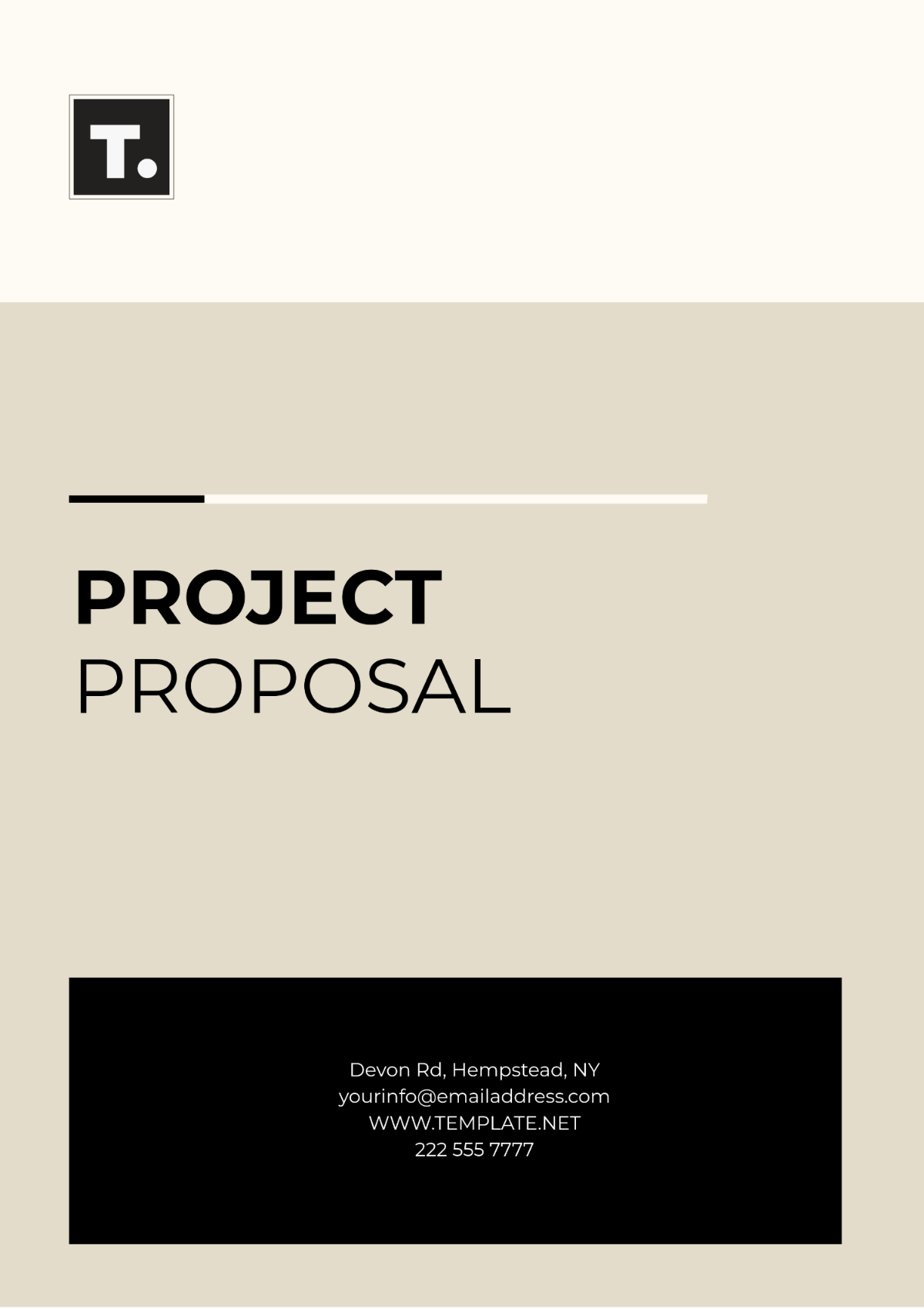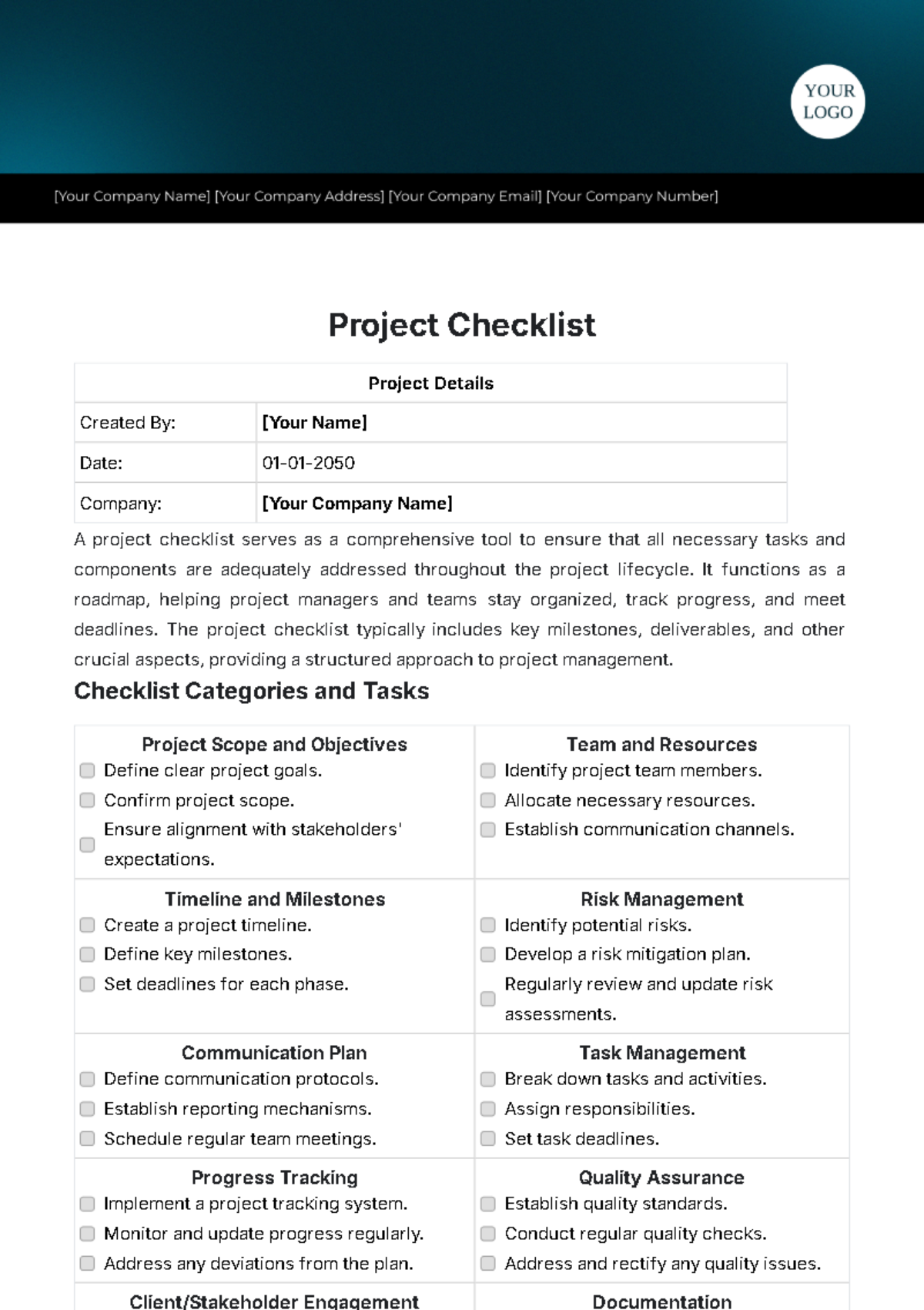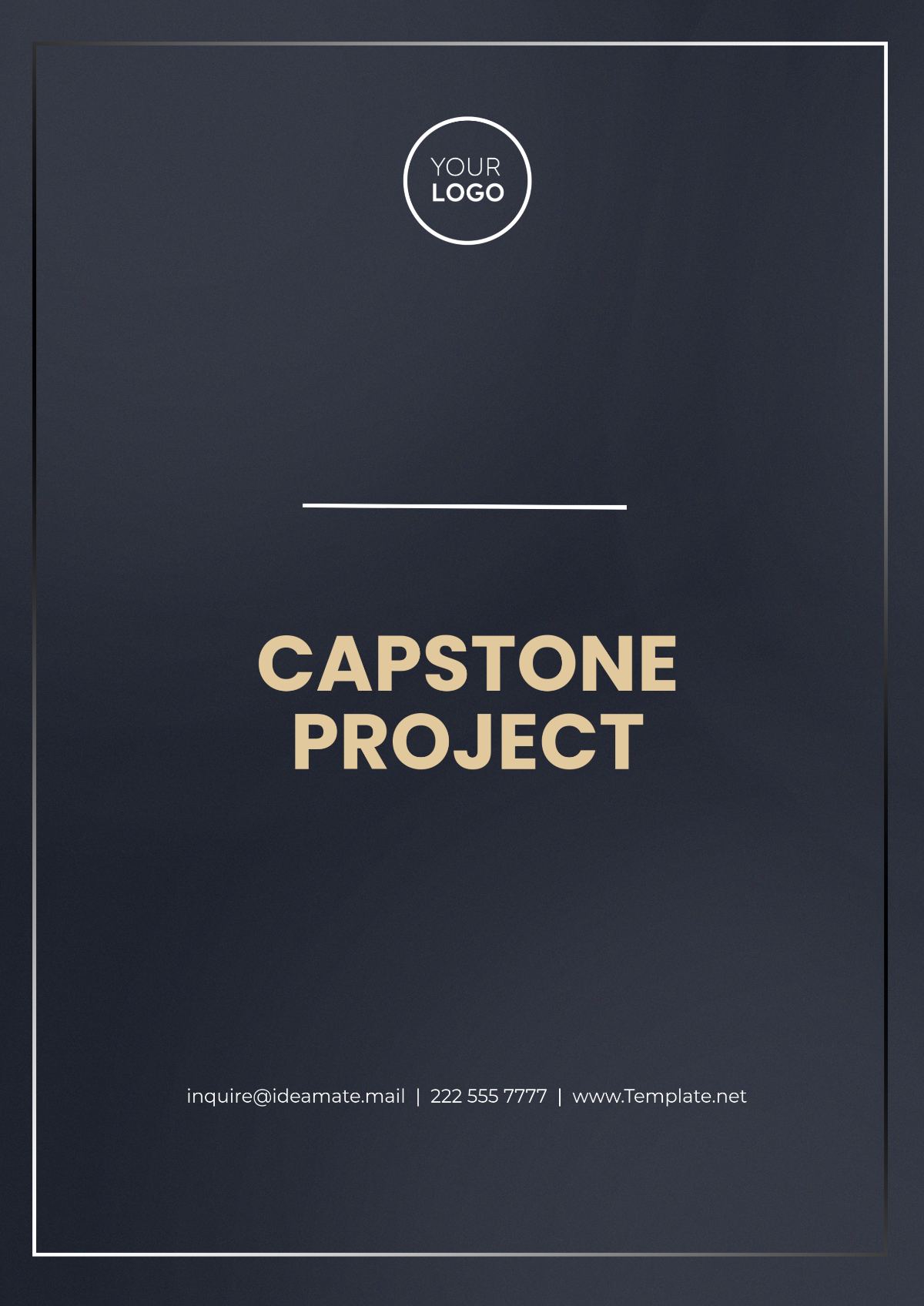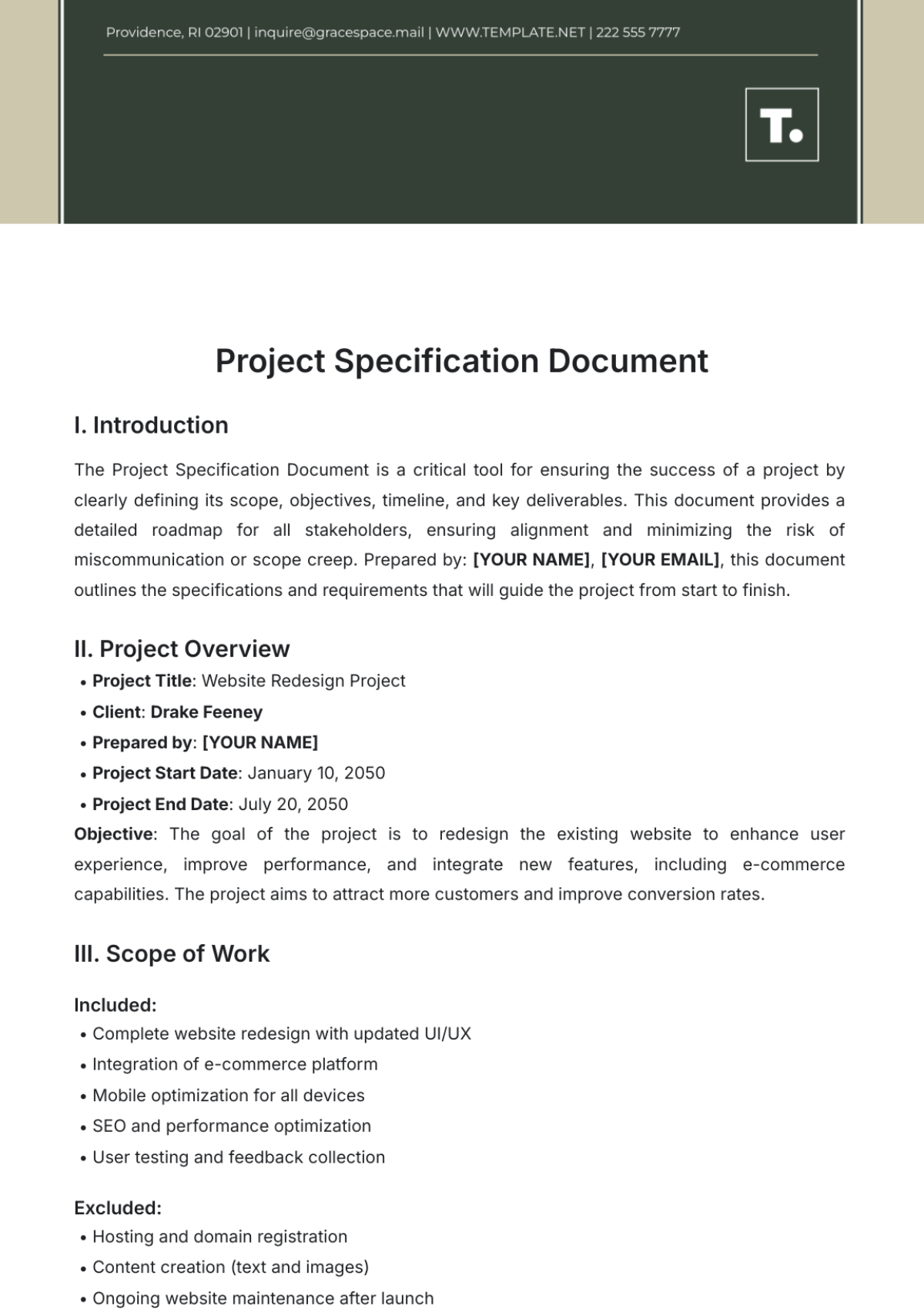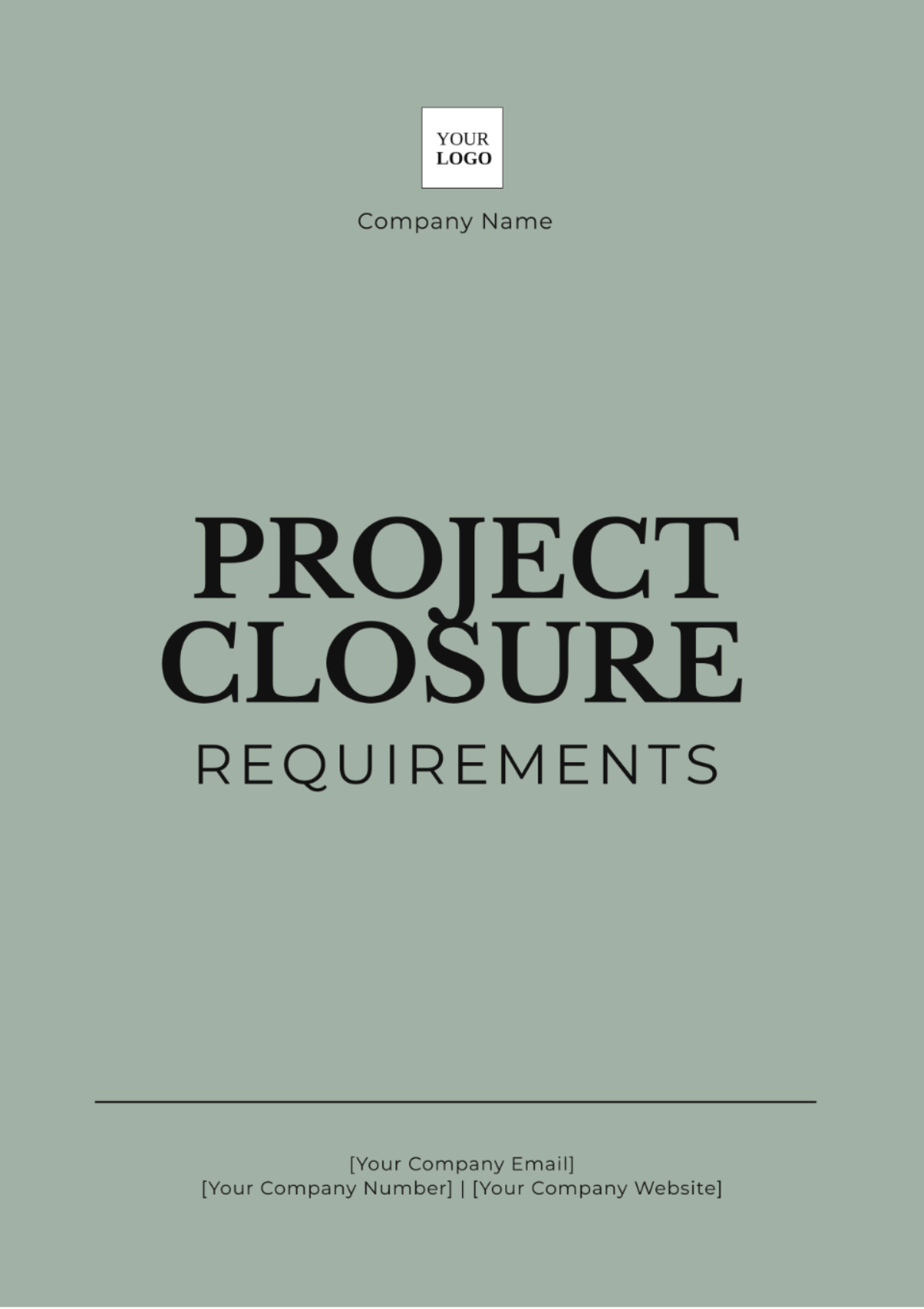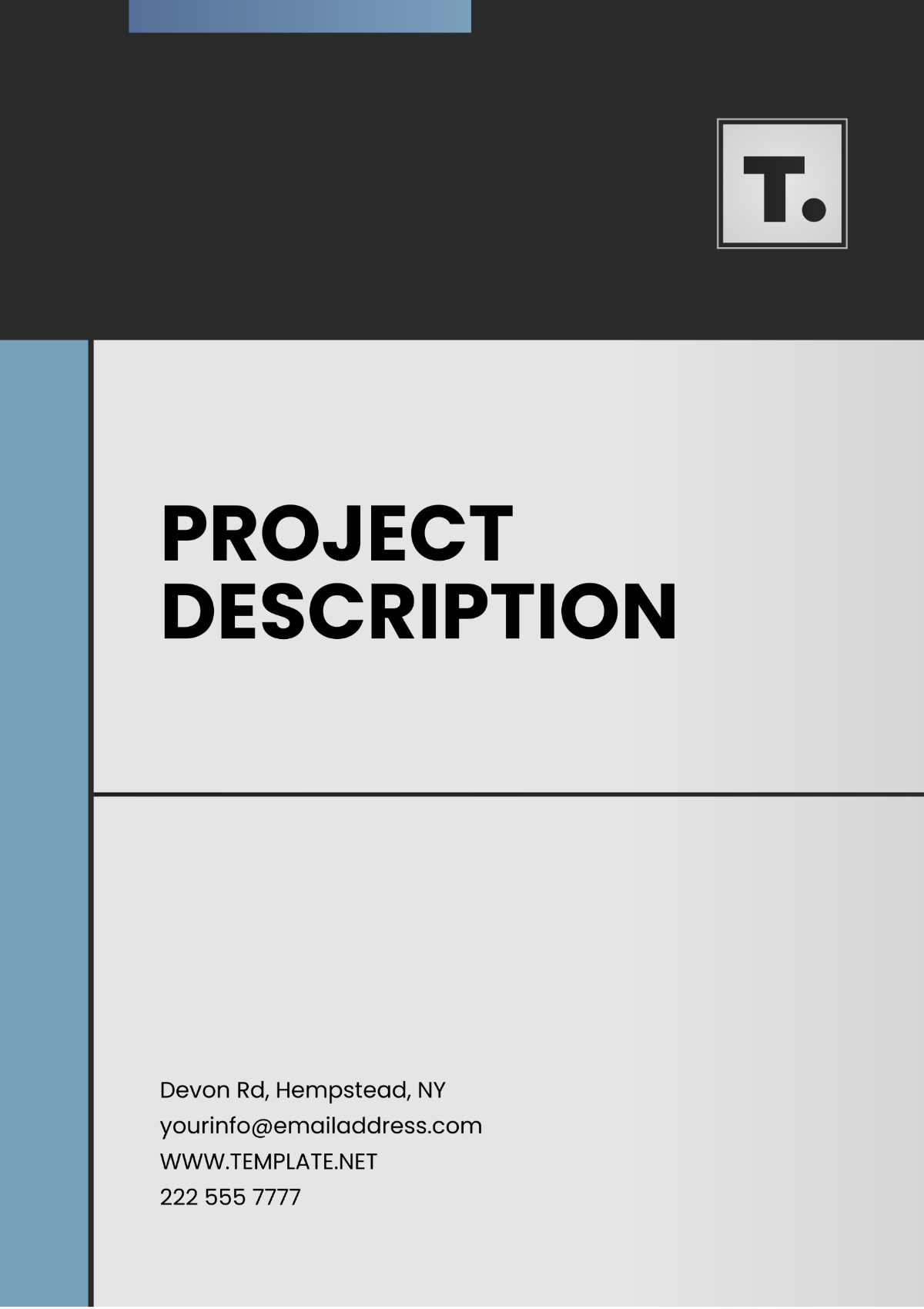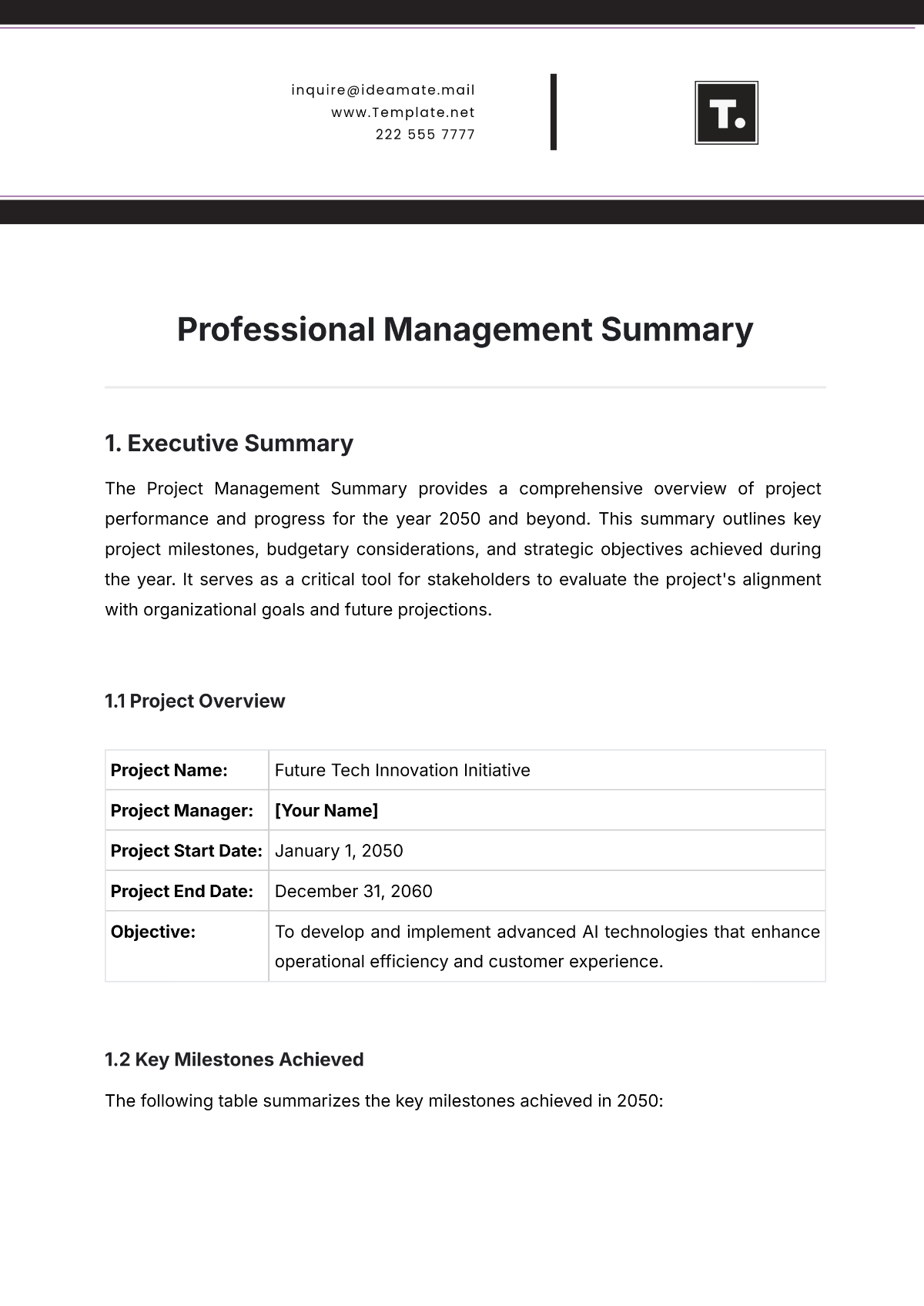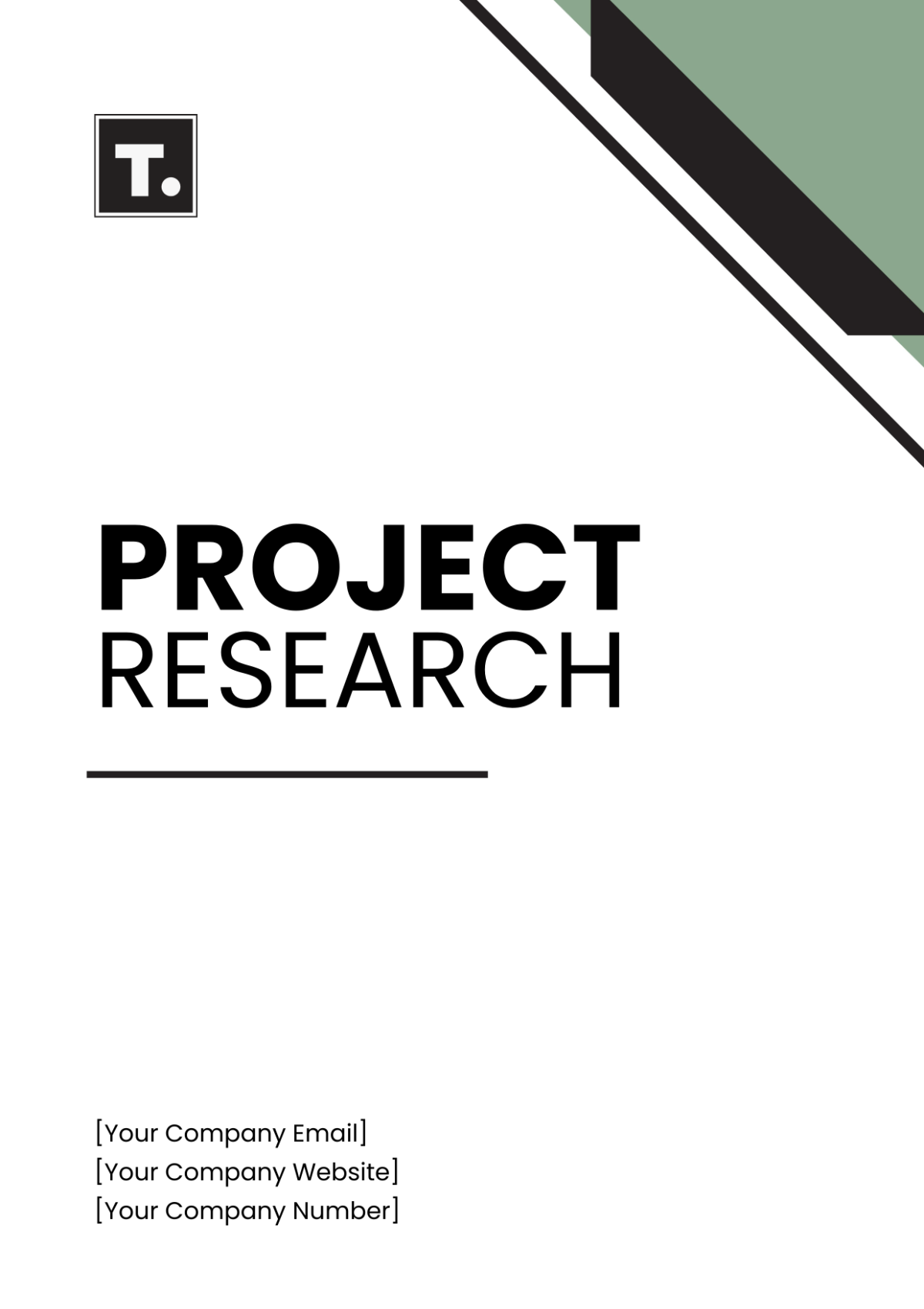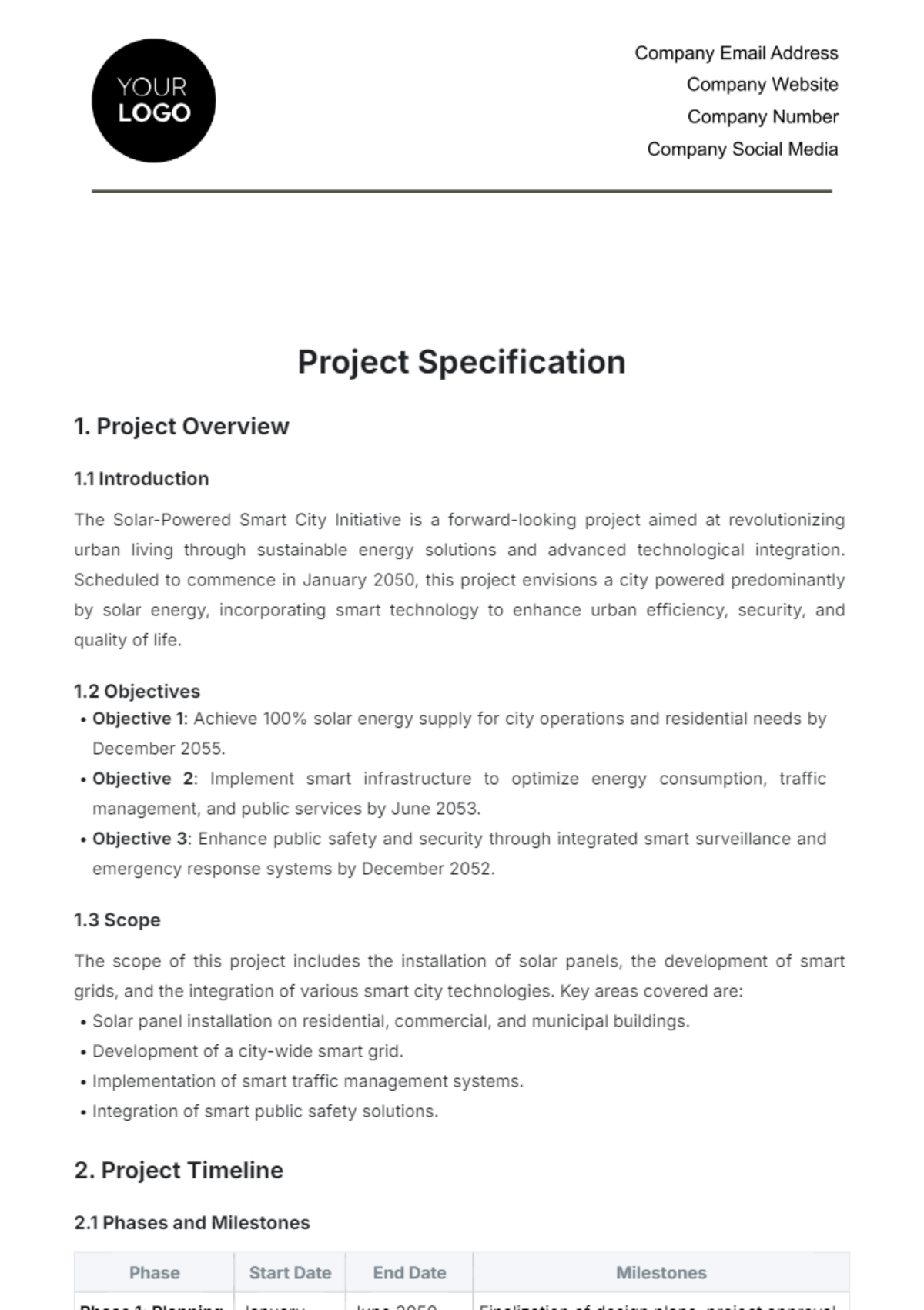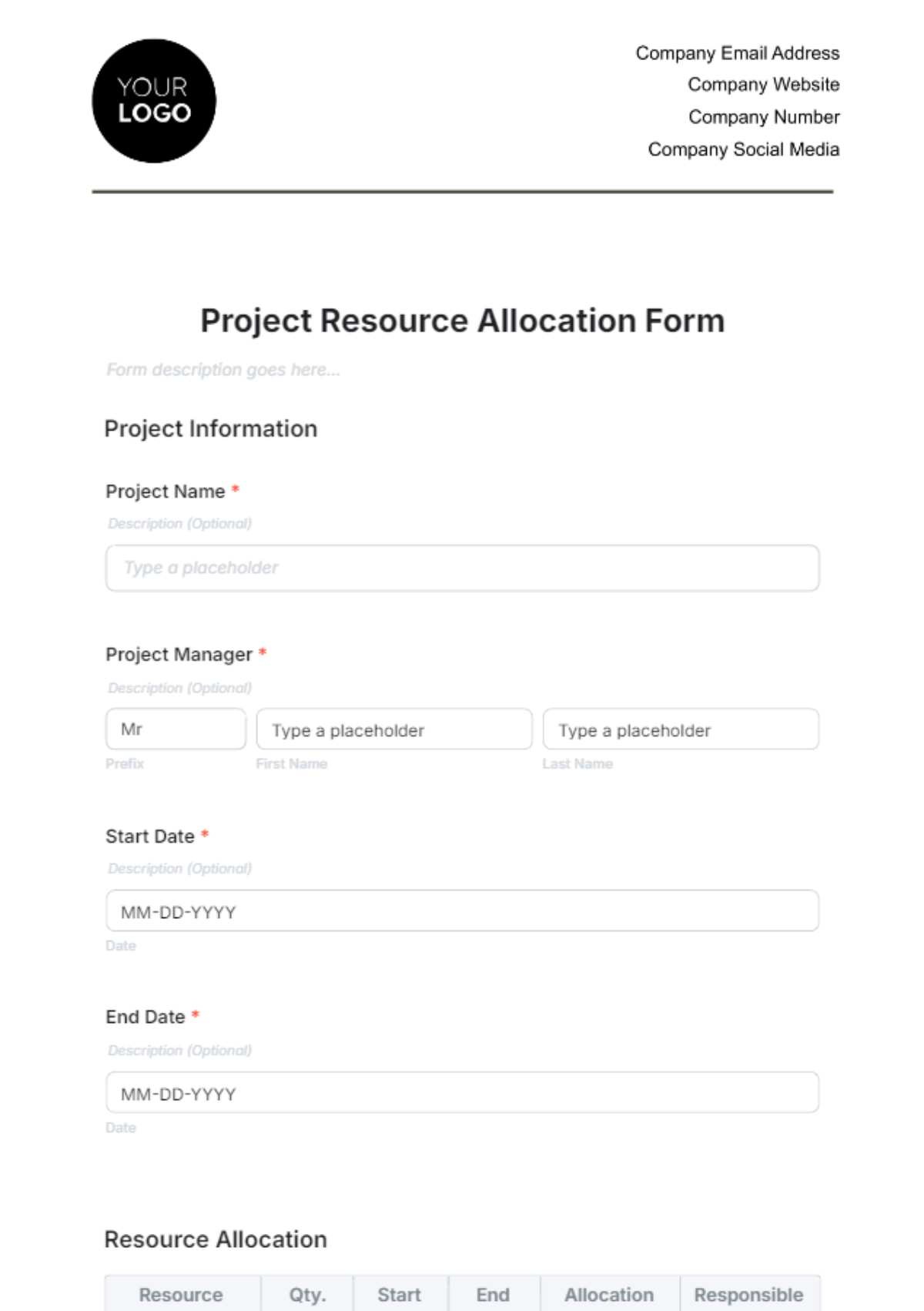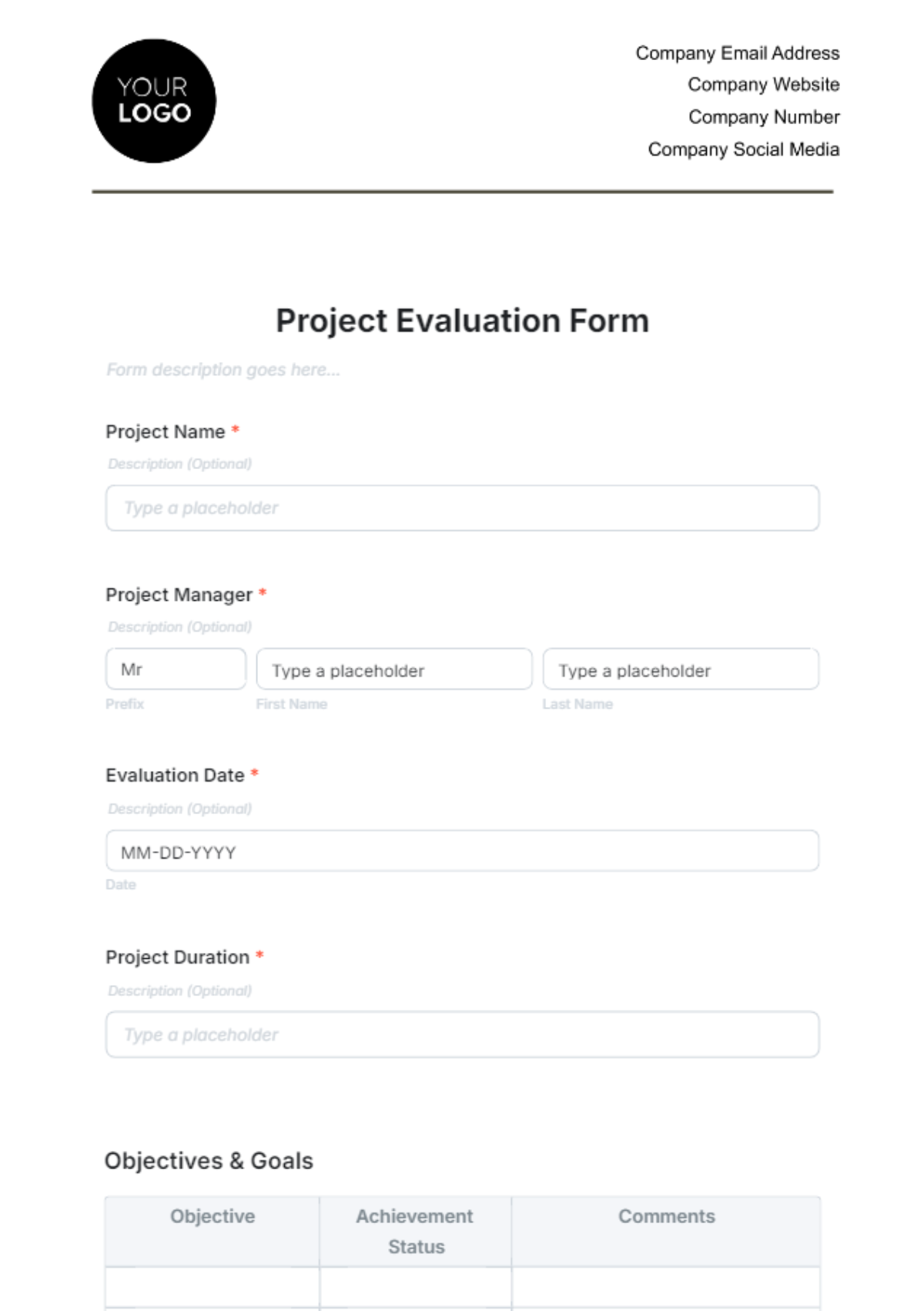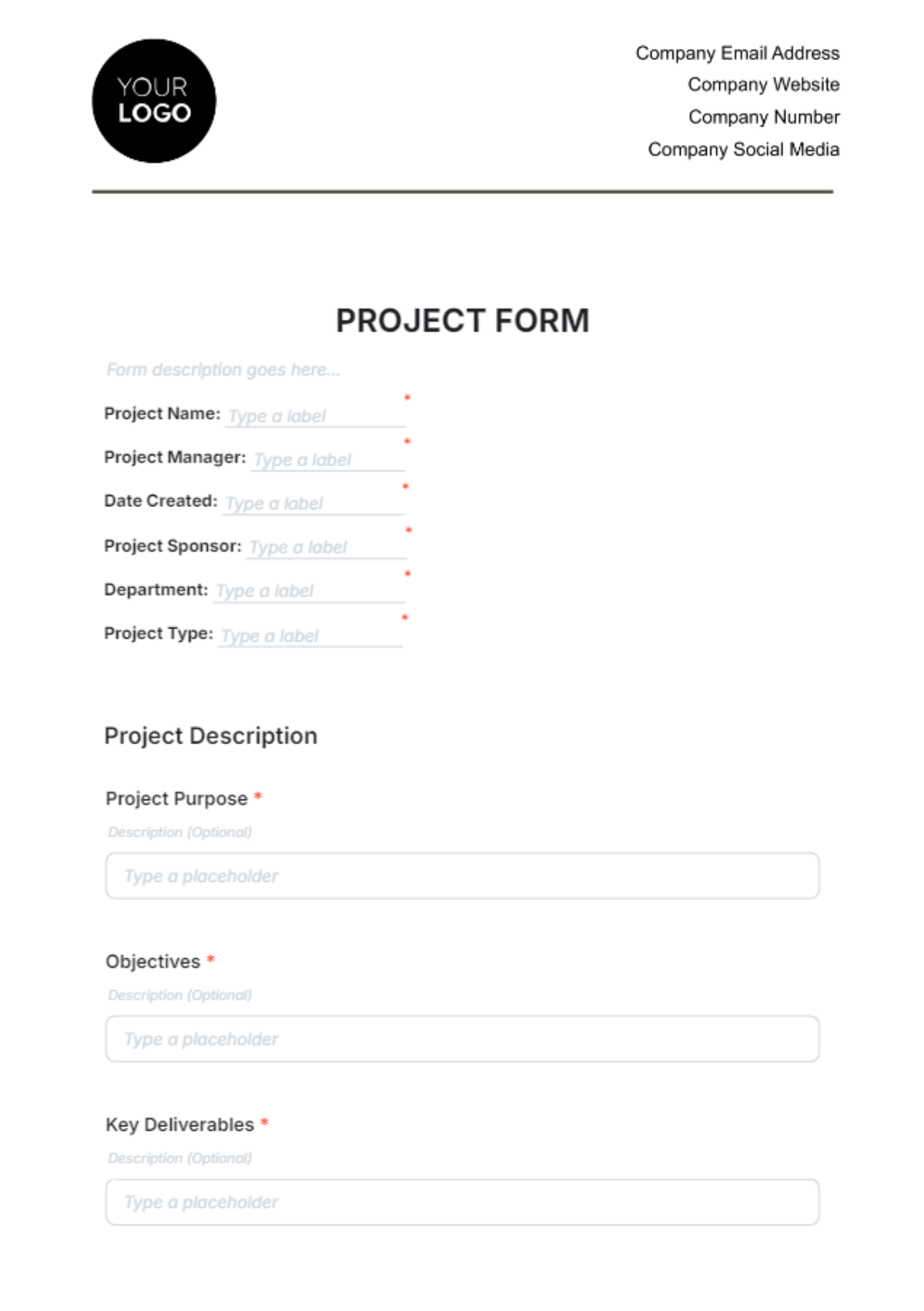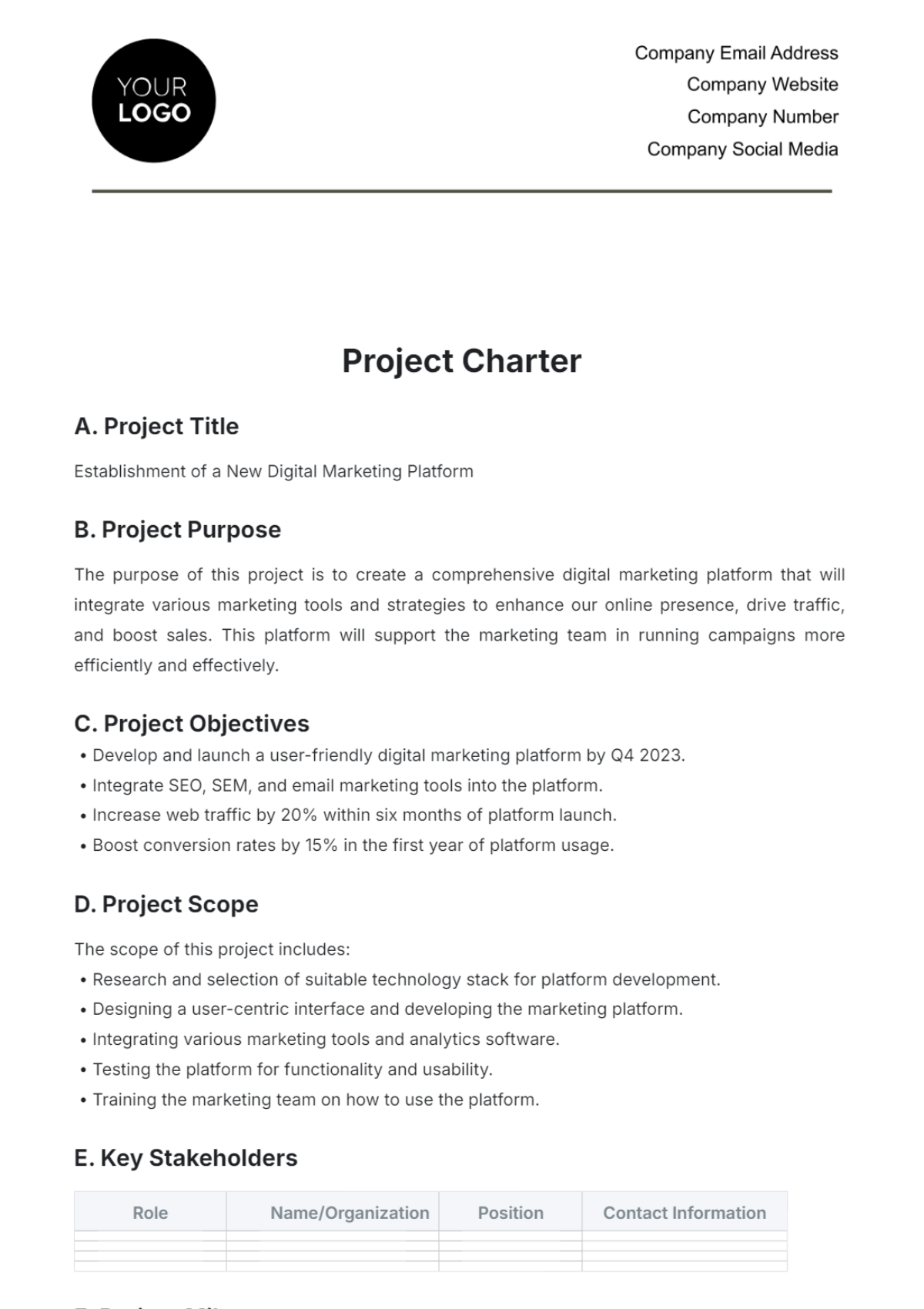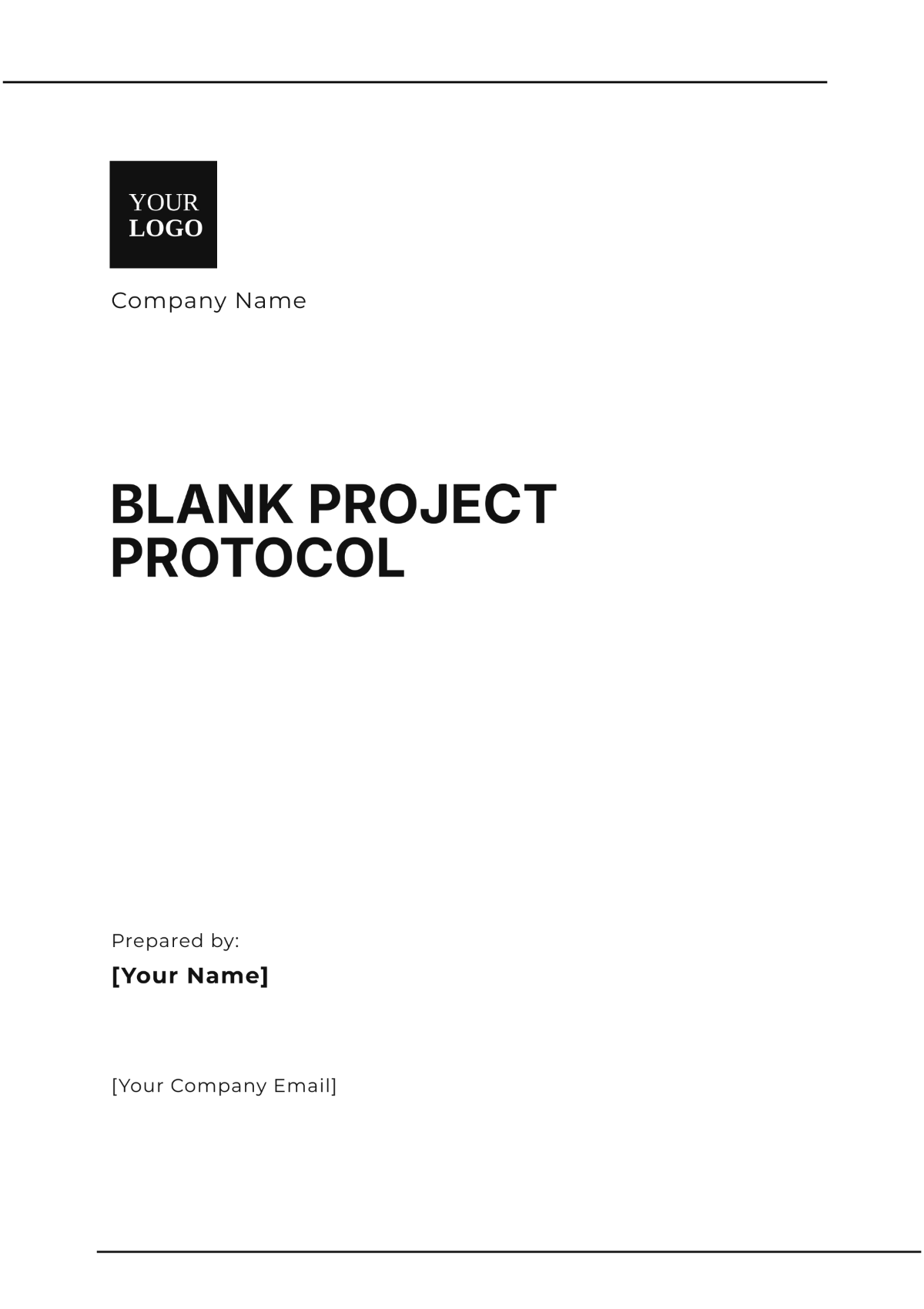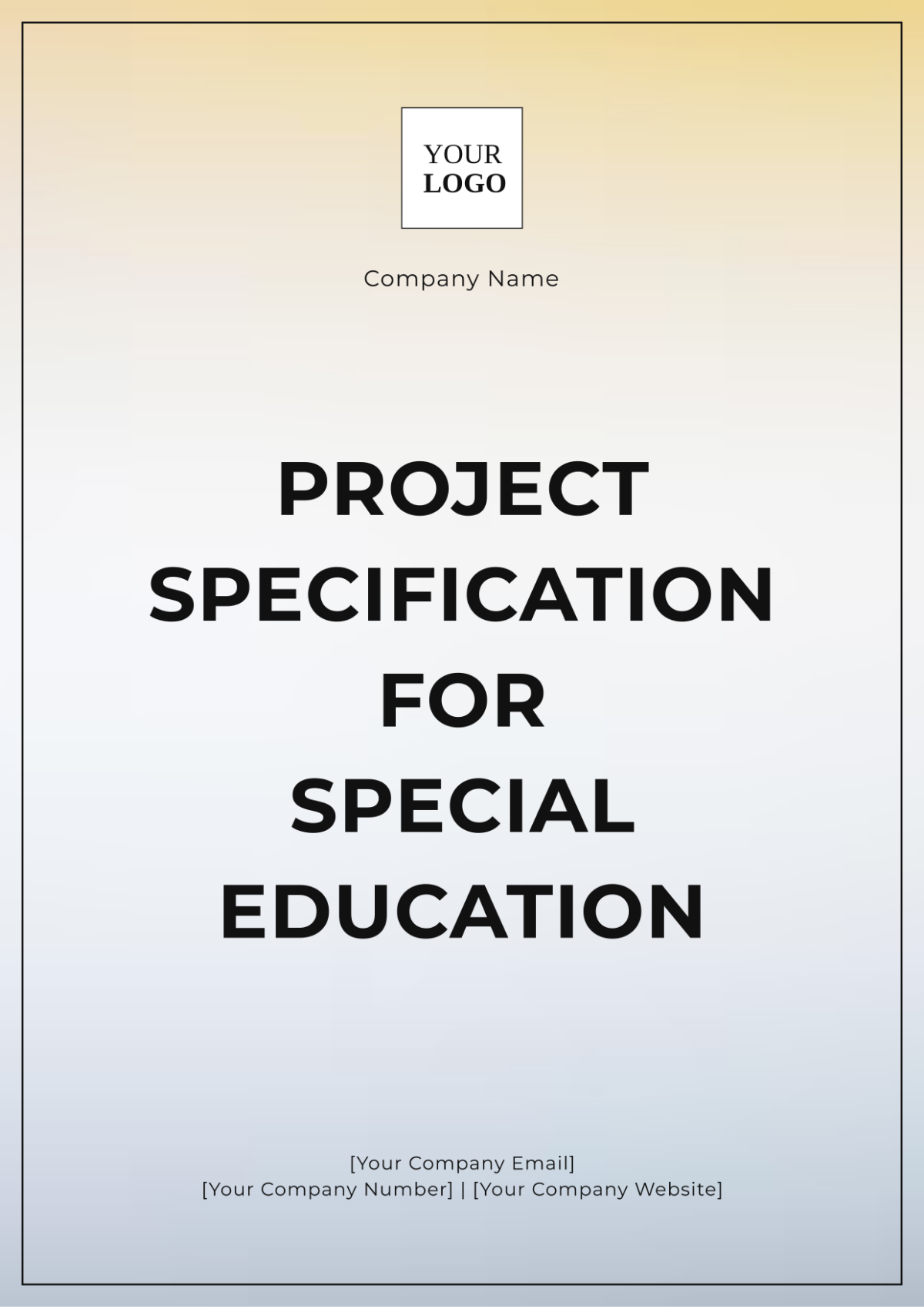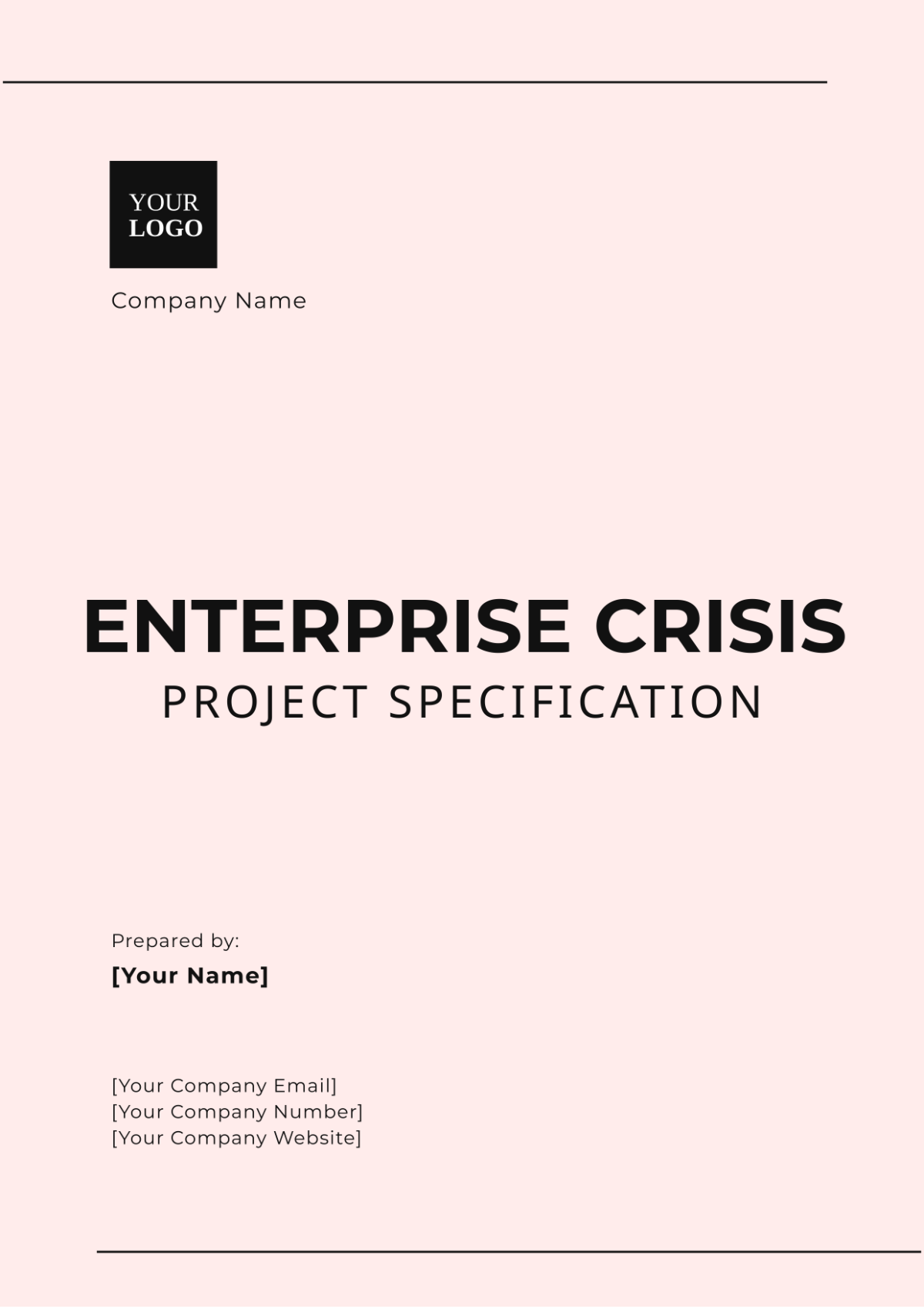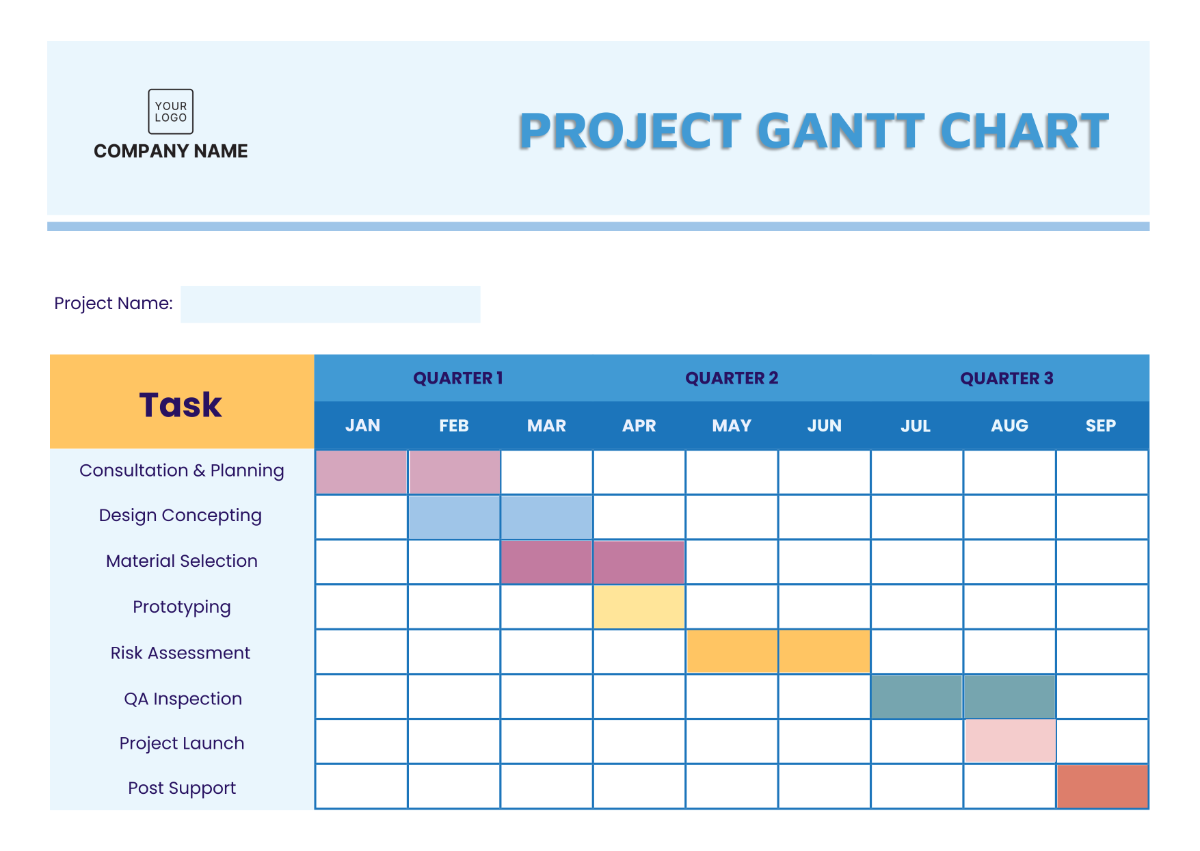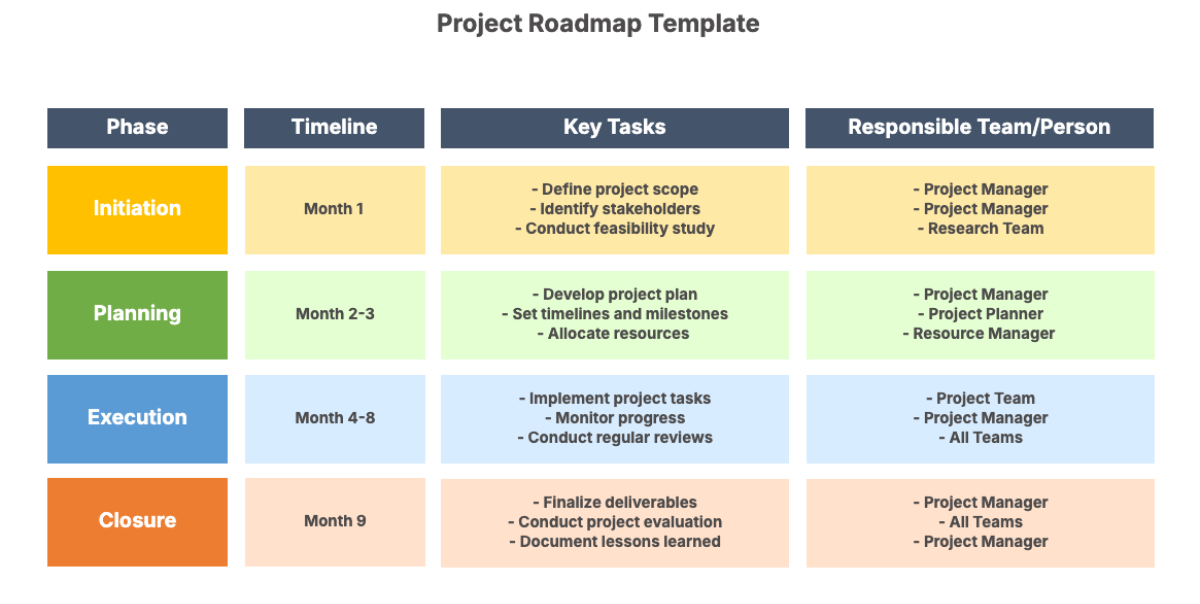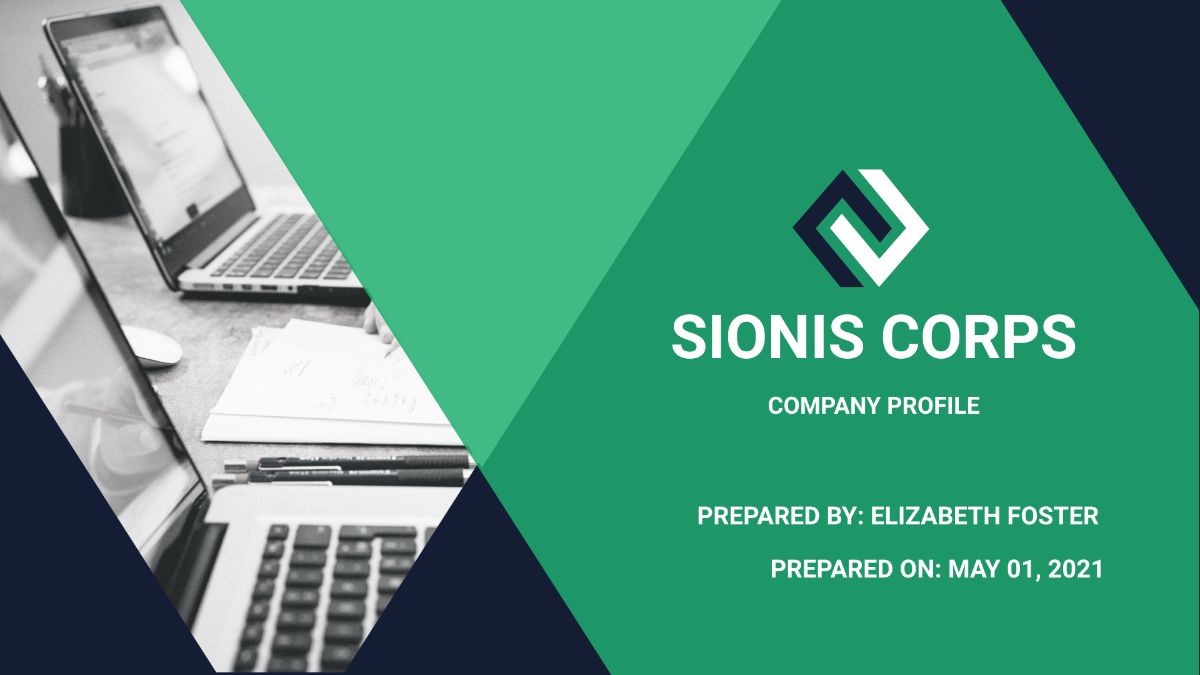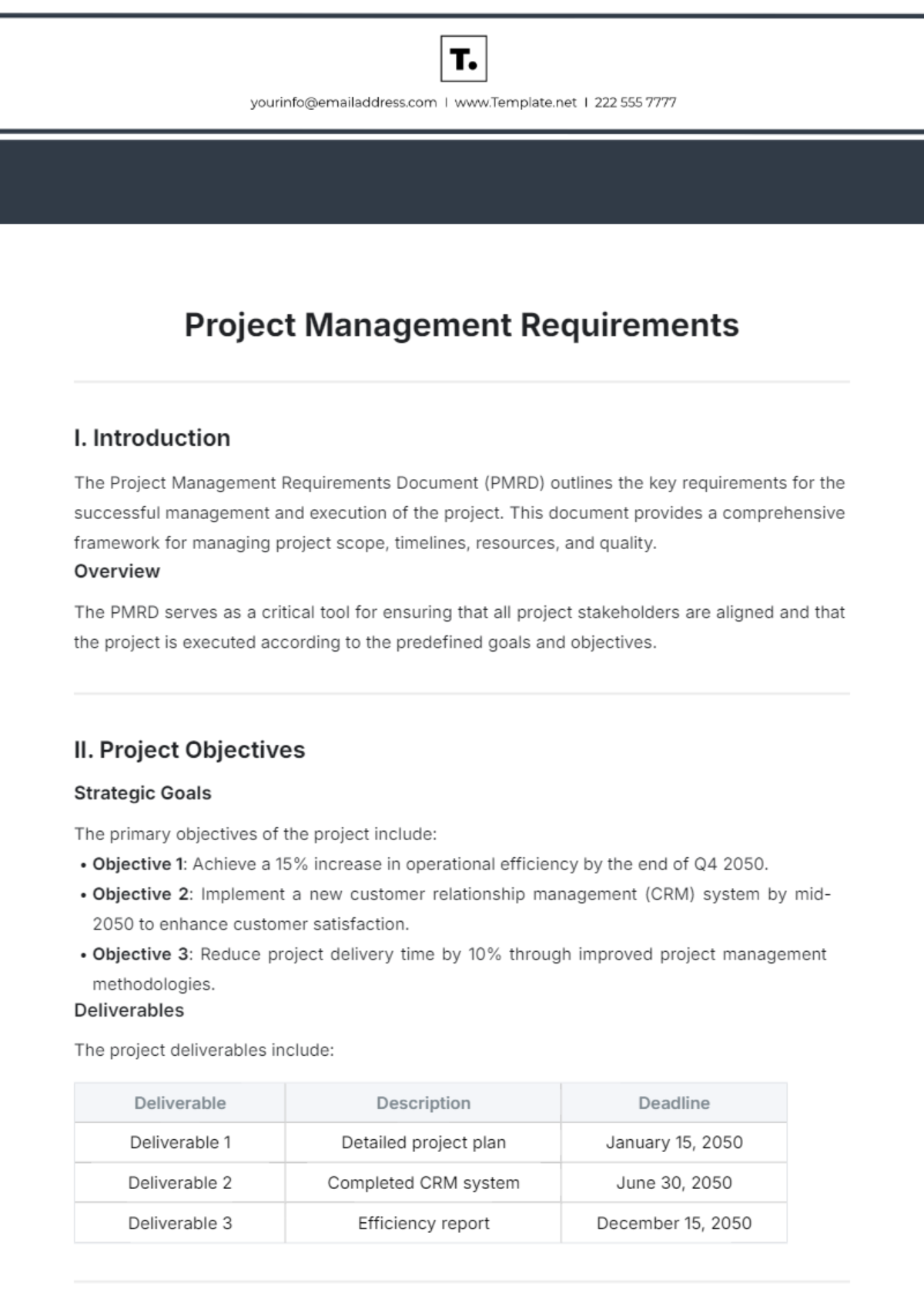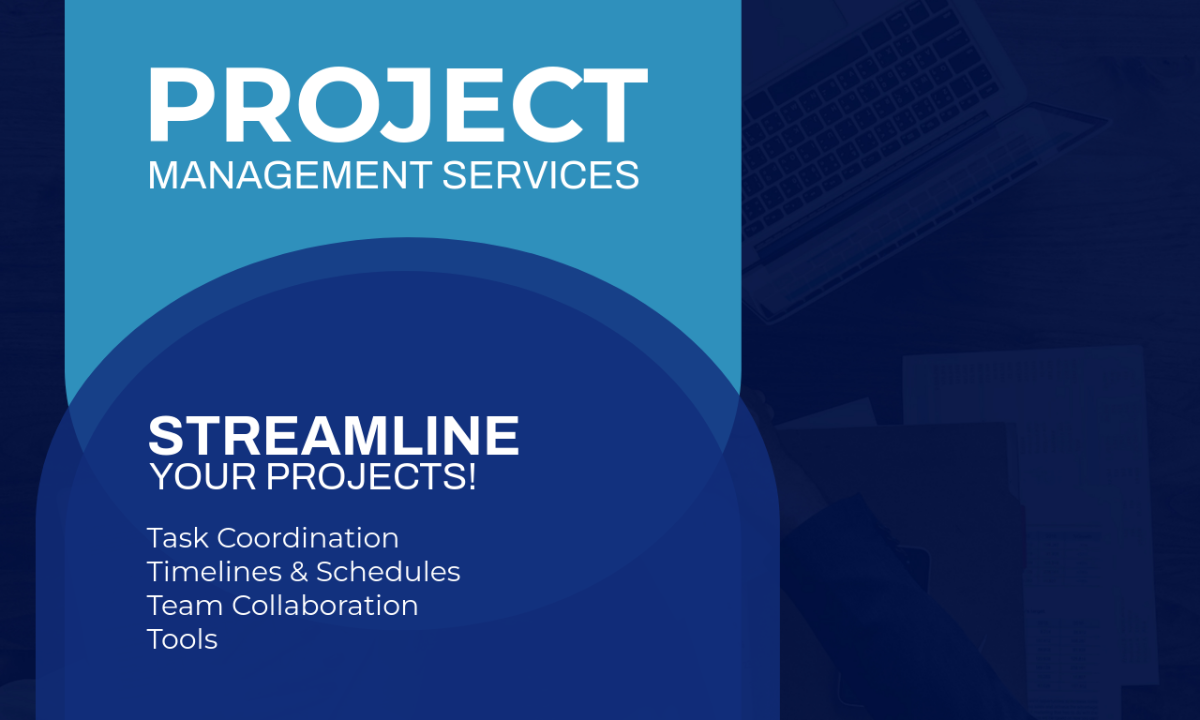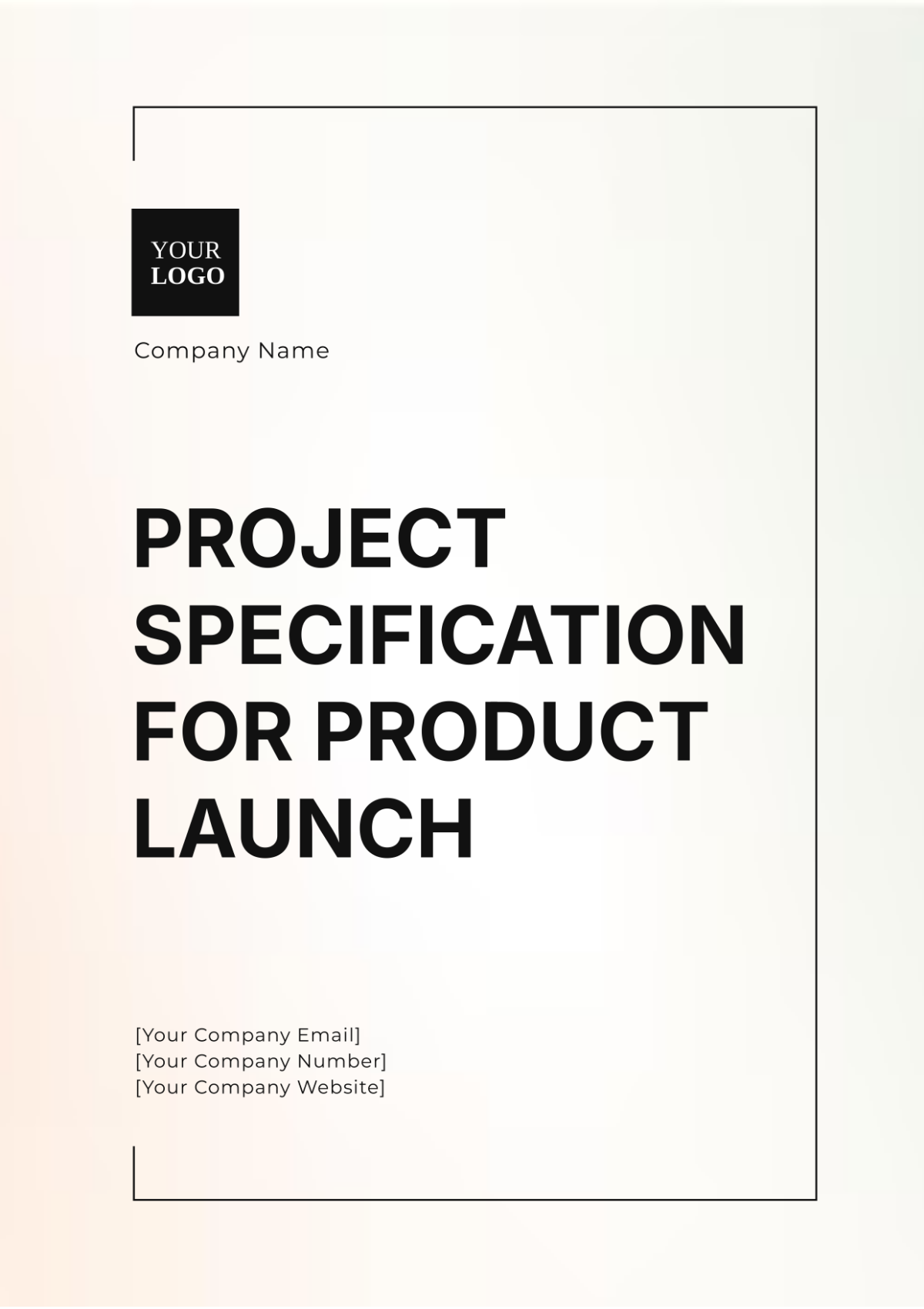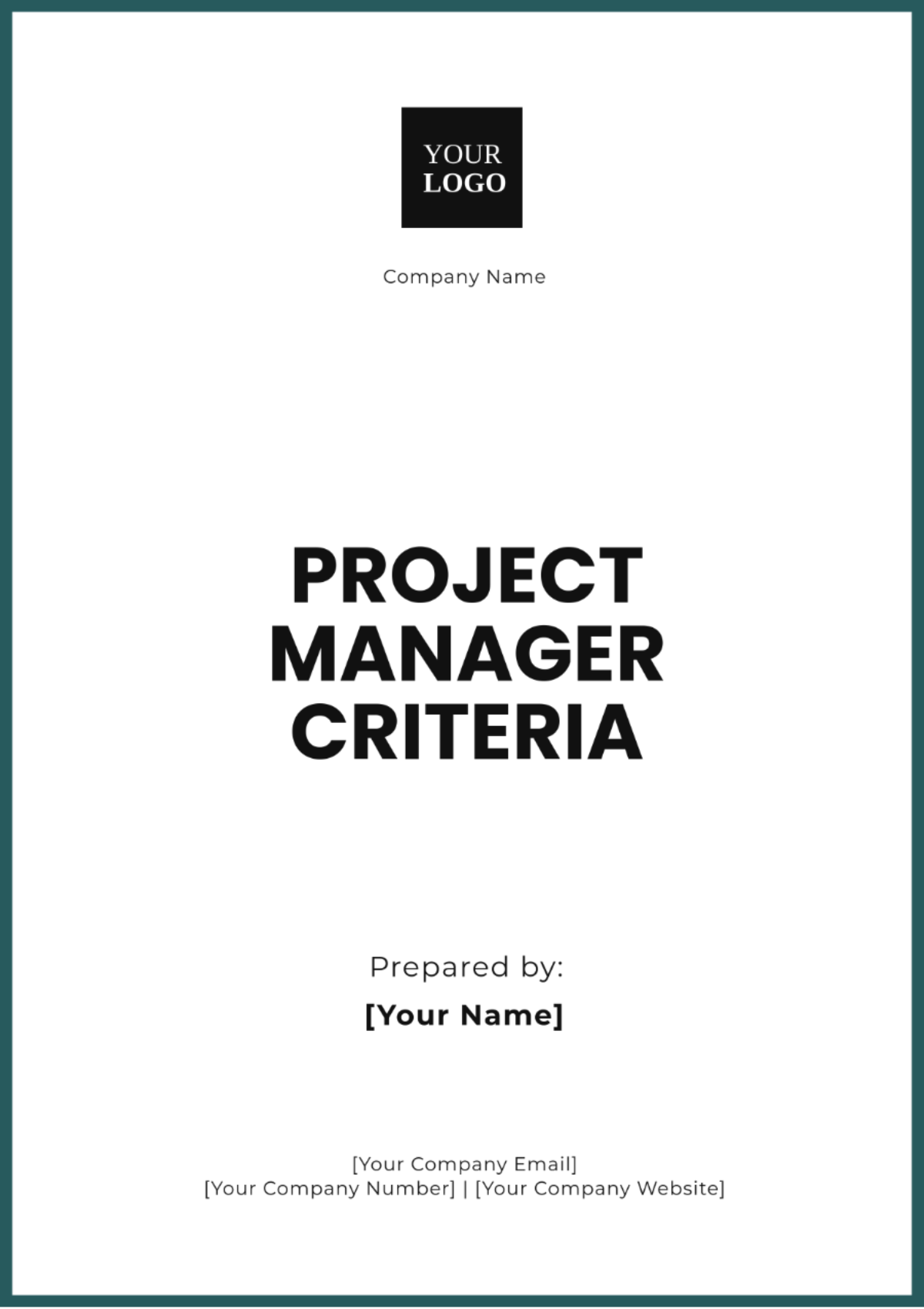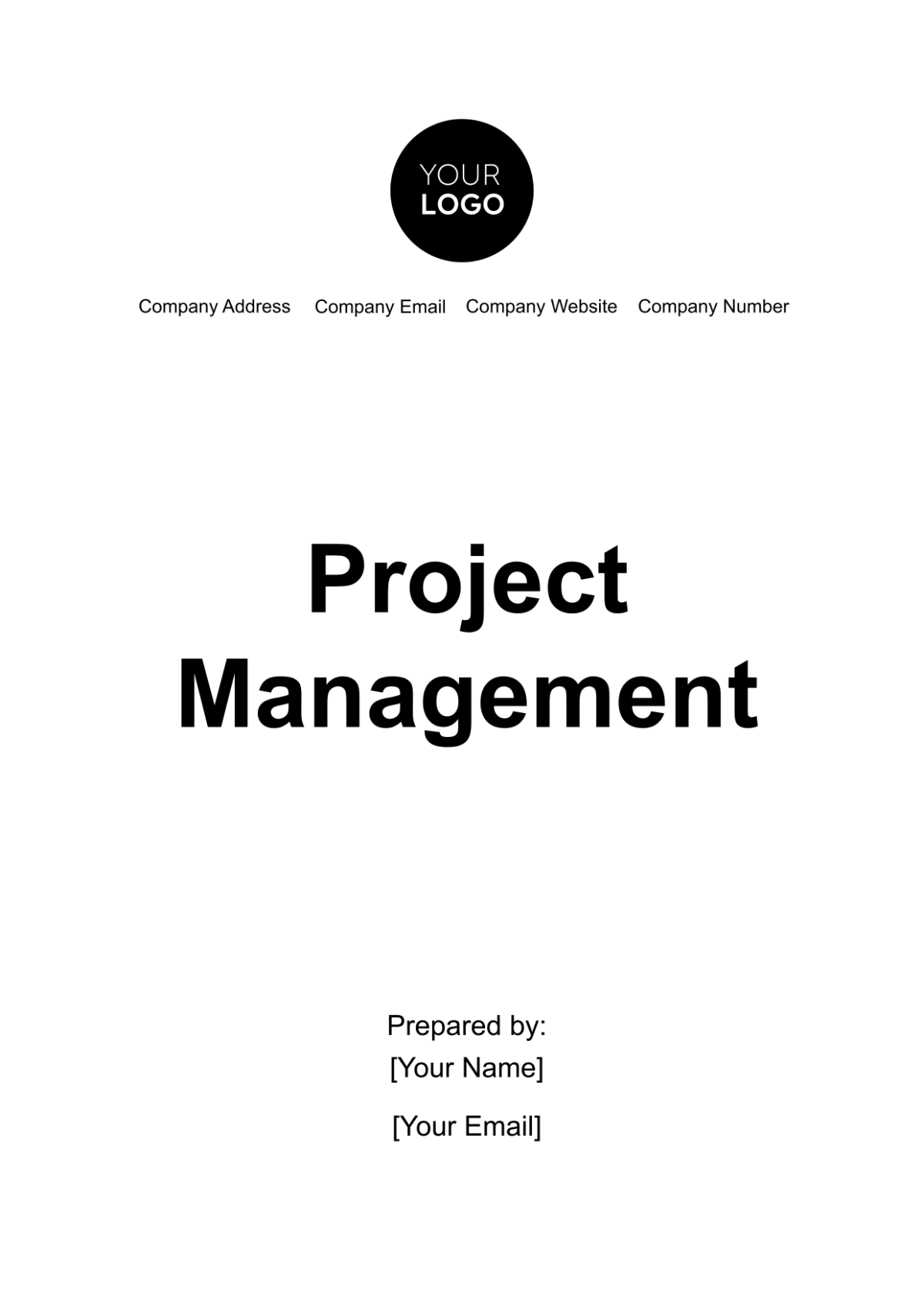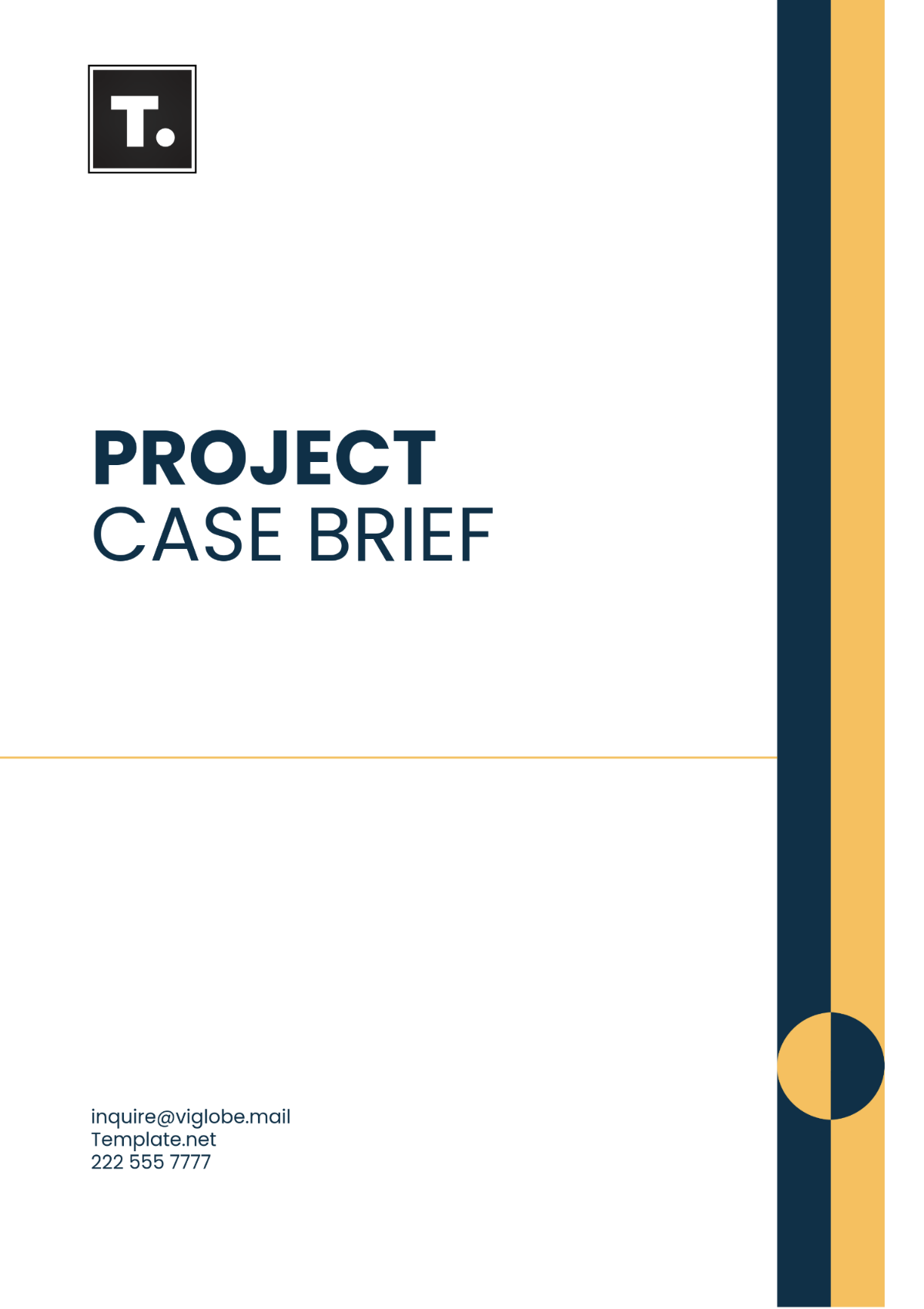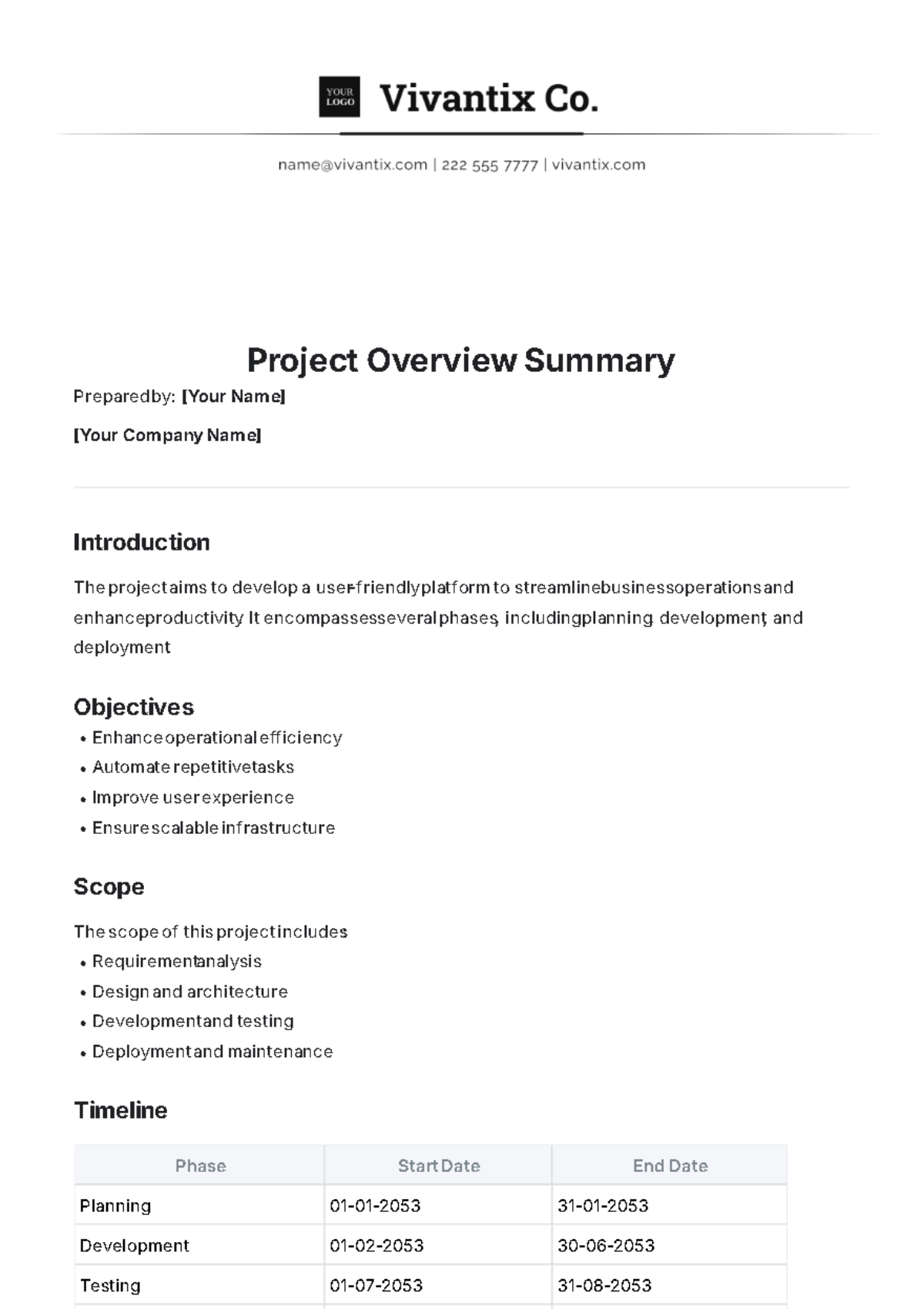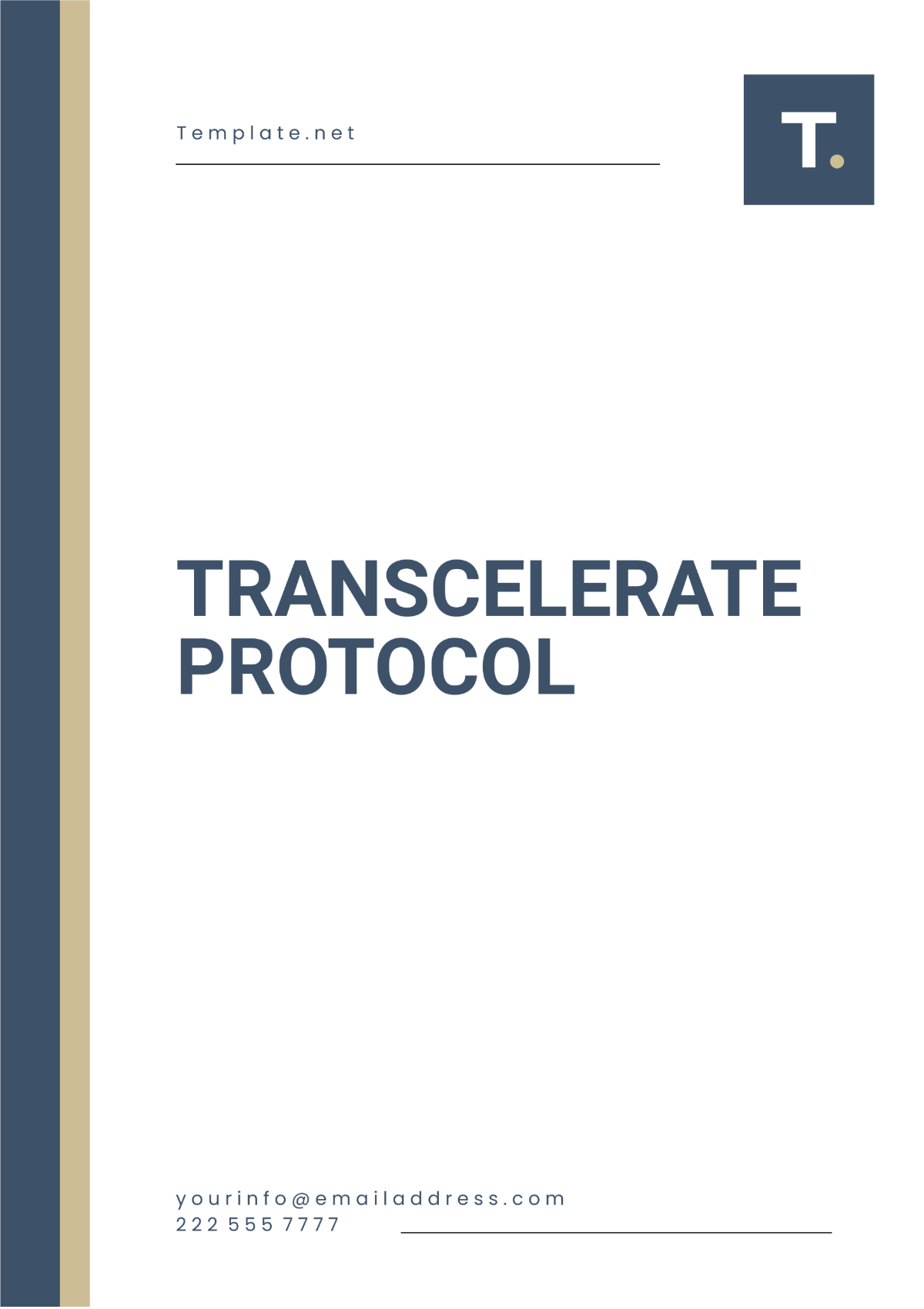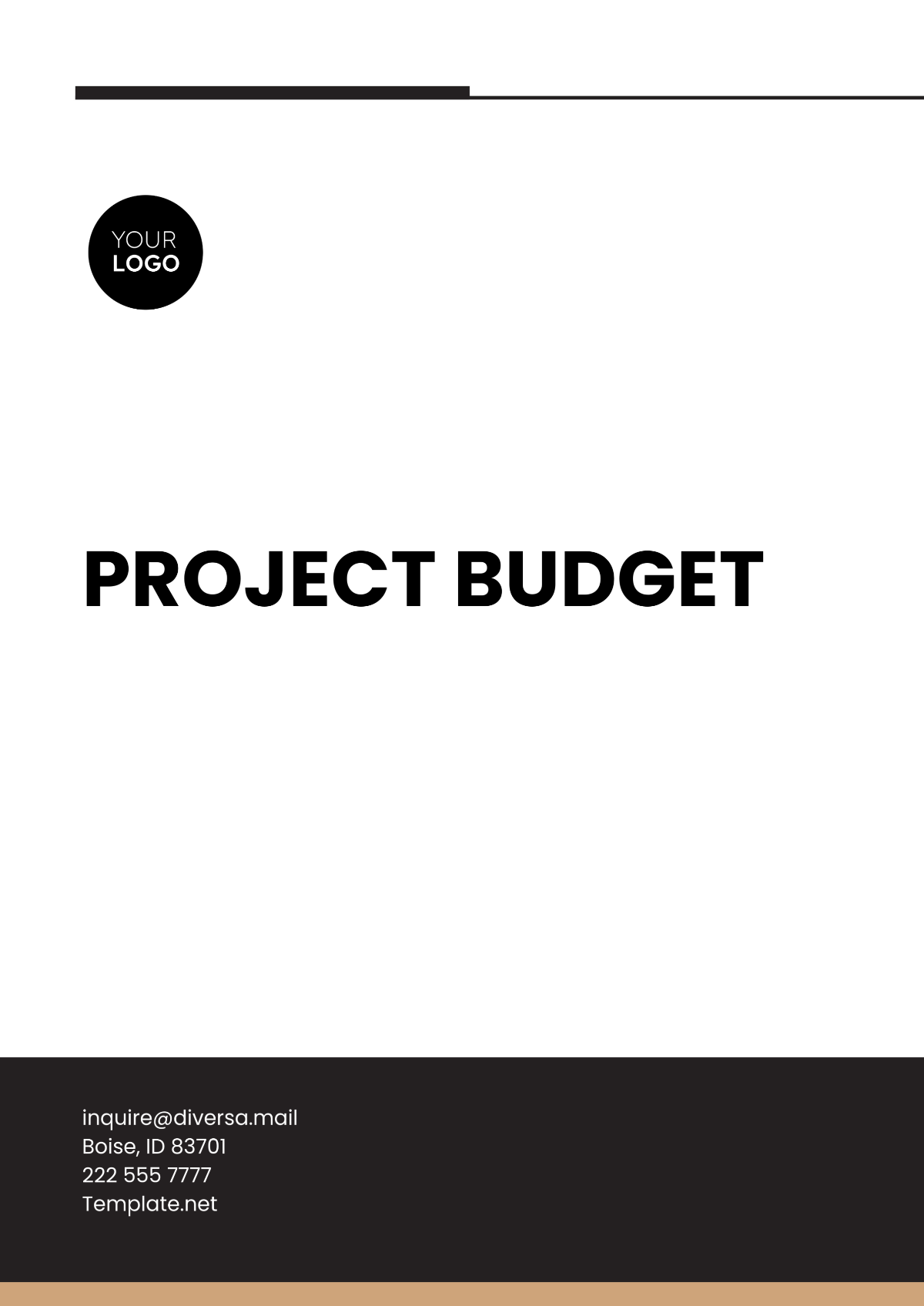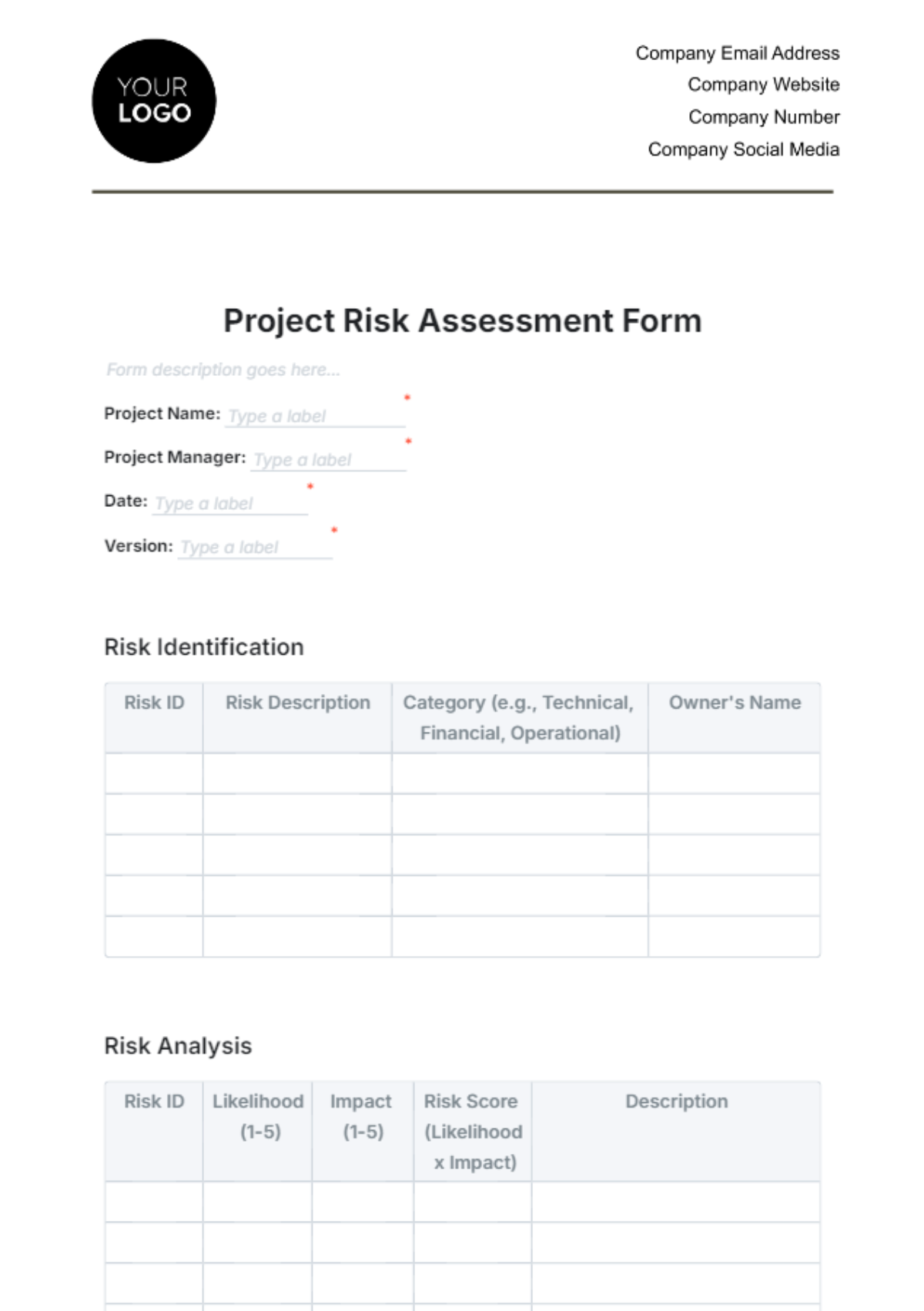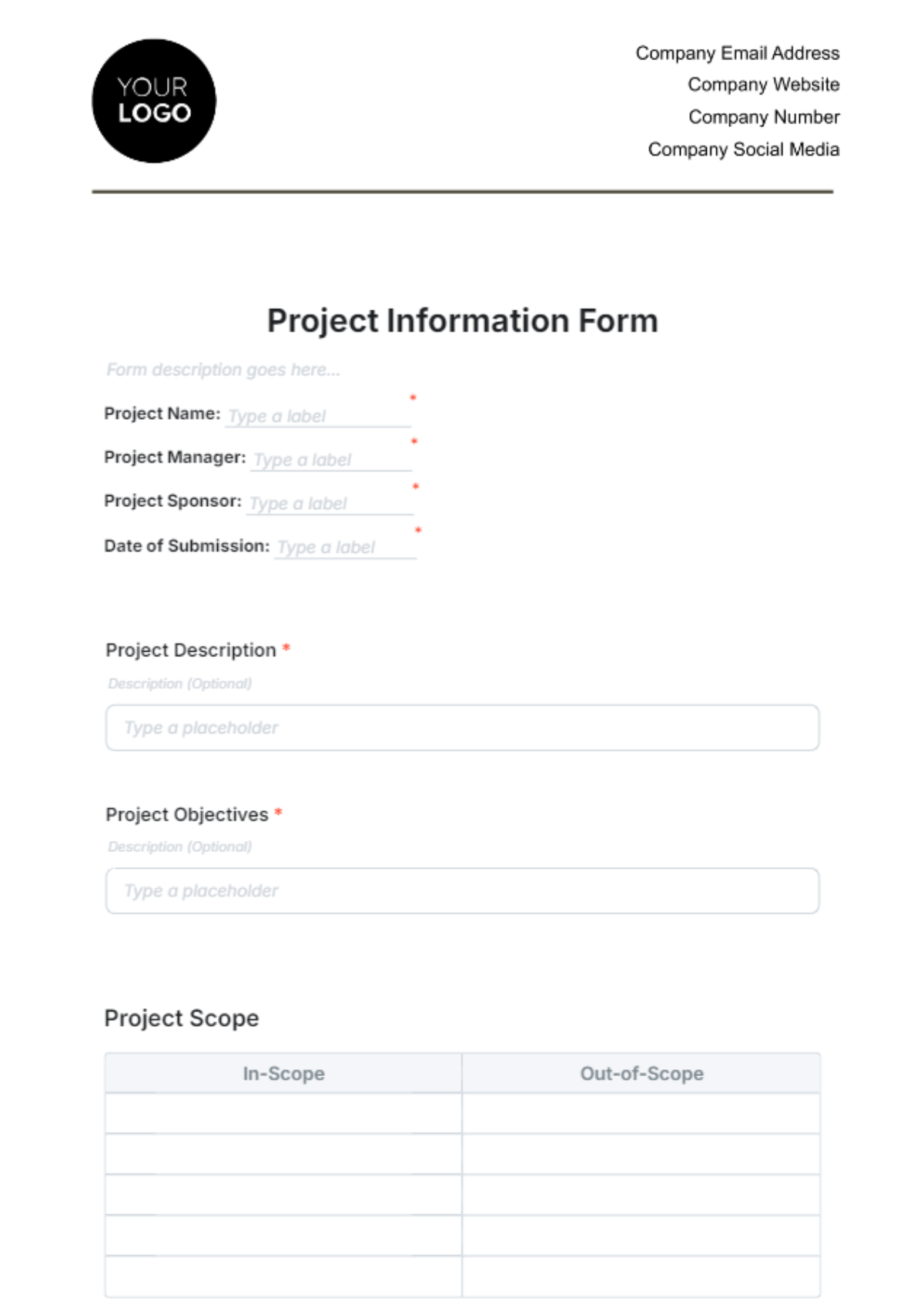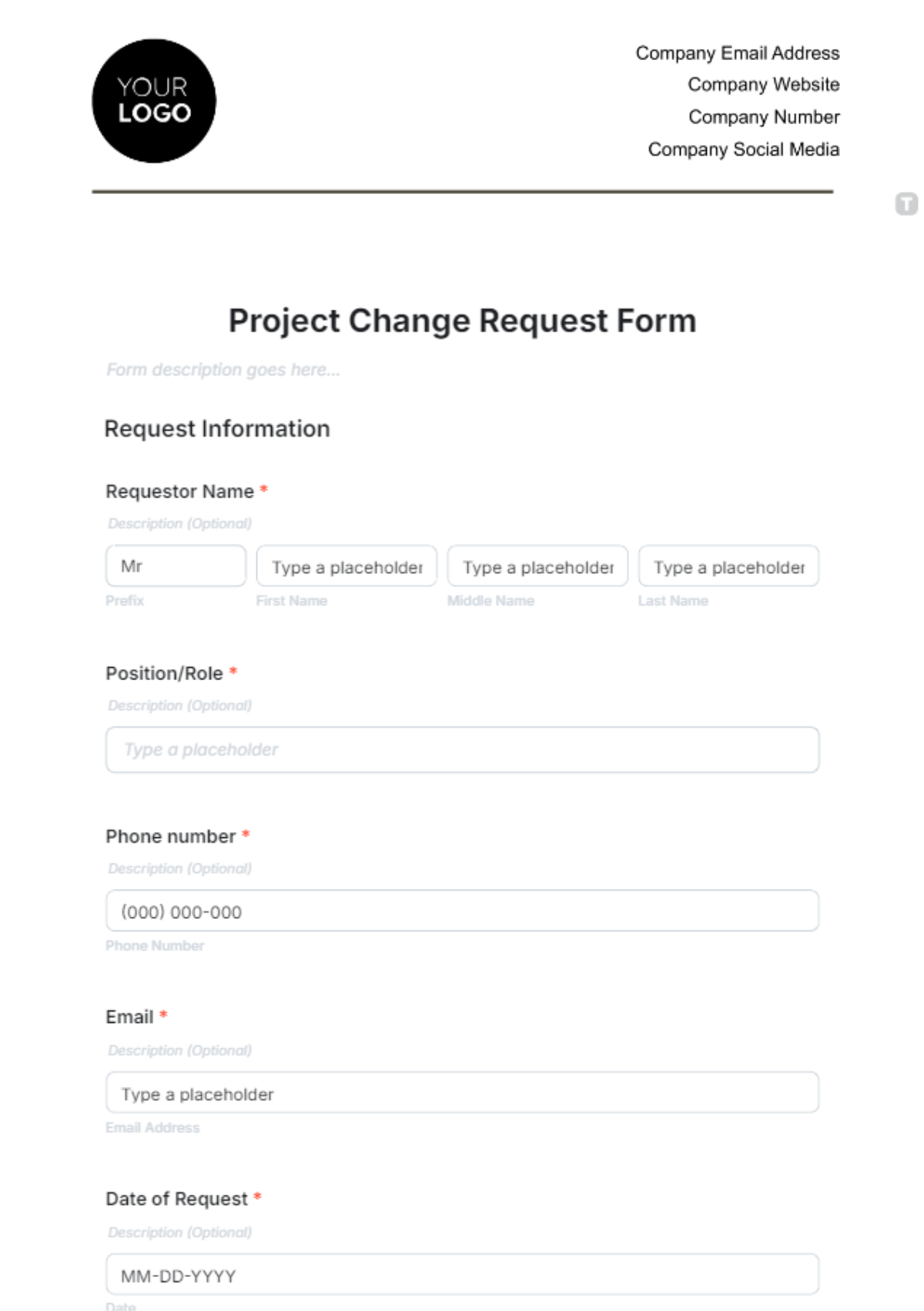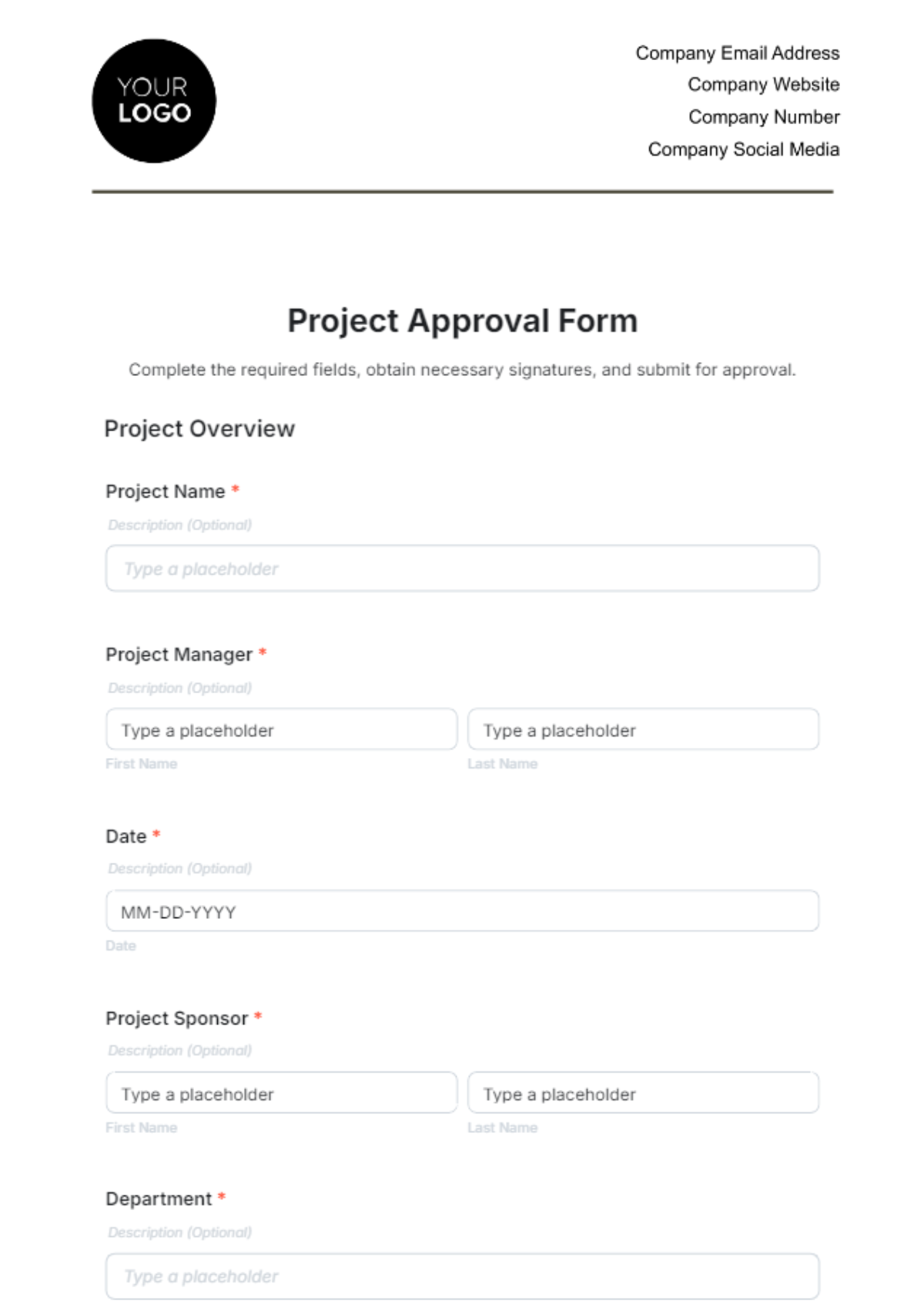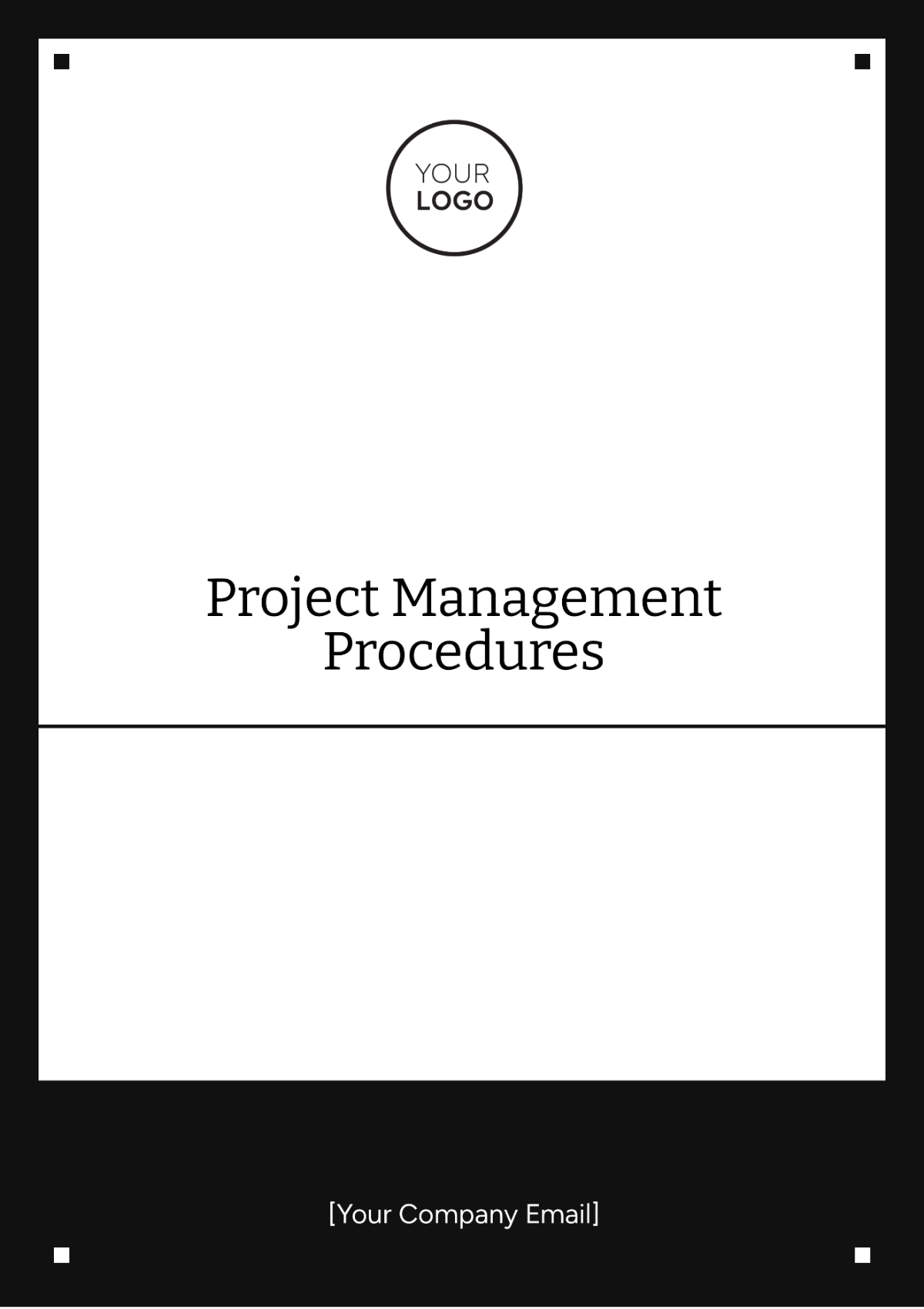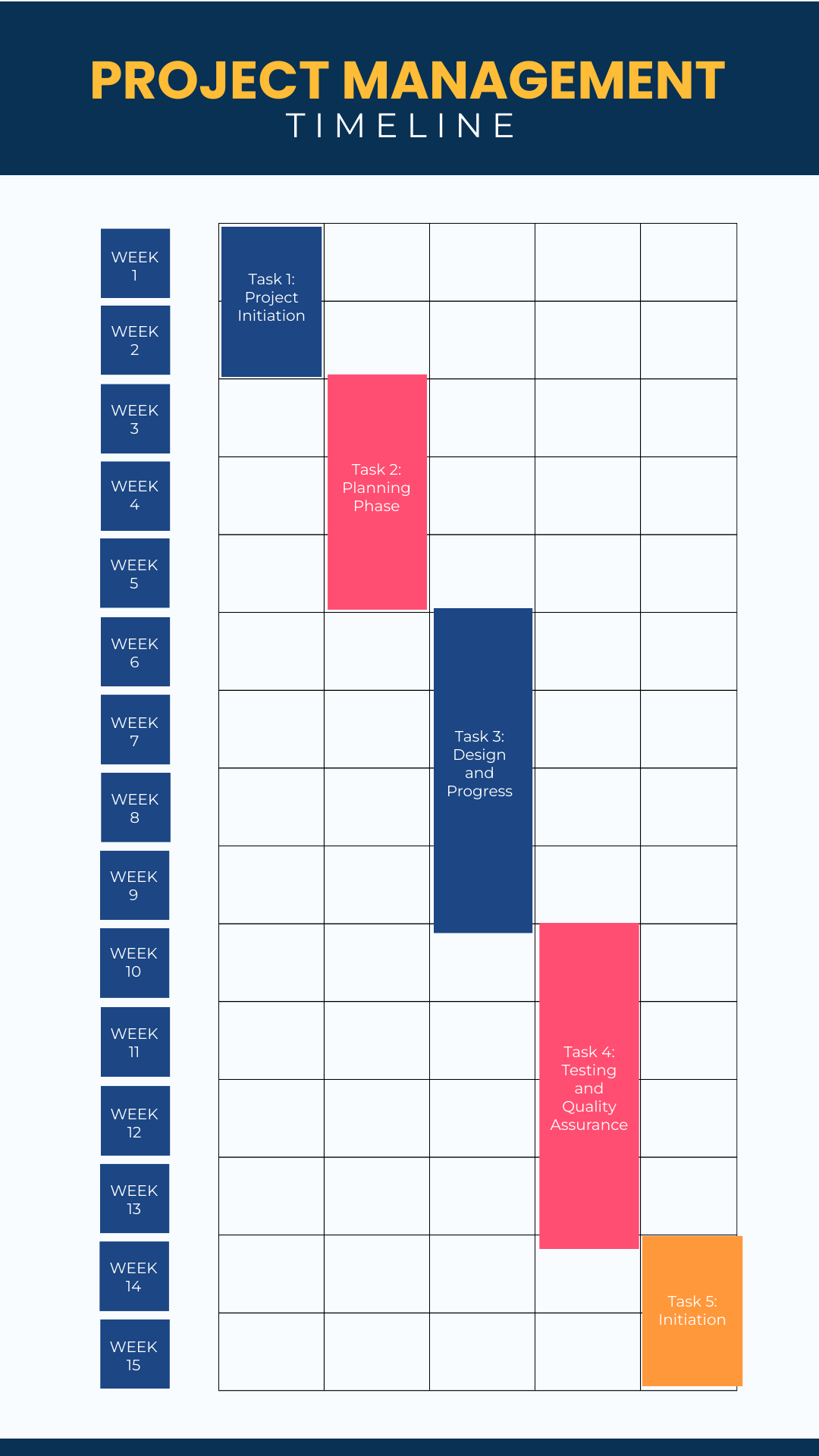Project Management
Prepared for: [Your Company Name]
Date: September 2050
I. Introduction
Project management is a vital function that involves planning, executing, and overseeing projects to ensure that they meet defined objectives and are delivered on time, within budget, and with the expected quality. This comprehensive Project Management Plan provides an overview of how [Your Company Name] will manage upcoming projects through the year 2050 and beyond. It outlines project objectives, management methodologies, team structures, and detailed strategies for risk management, cost control, and quality assurance.
II. Project Overview
A. Project Objectives
The primary objective of any project undertaken by [Your Company Name] is to deliver successful outcomes that align with strategic goals. For projects in 2050 and onwards, this will involve utilizing cutting-edge technology, improving sustainability practices, and optimizing resource management.
Cost Efficiency: Projects will aim to reduce operational costs by 20% by 2055 through improved resource allocation and automation.
Time Management: Complete 95% of all projects ahead of schedule by implementing agile management methodologies.
Innovation: Integrate new technology and automation tools to ensure that the company stays at the forefront of industry advancements.
B. Project Scope
The scope defines what is included and what is not included in the project. For projects in 2050, [Your Company Name] will undertake:
Developing innovative digital platforms.
Streamlining logistics and supply chains through AI-driven solutions.
Expanding global market reach by establishing hubs in emerging markets by 2060.
Excluded from the scope are any legacy systems that are not compatible with new innovations introduced post-2050.
C. Key Deliverables
The following deliverables will be essential to meet the objectives:
Digital Transformation: A fully automated project tracking system.
Sustainability Strategy: A 30% reduction in carbon emissions across projects by 2060.
Global Market Expansion: Establishing operational hubs in 10 new markets by 2065.
III. Project Management Structure
A. Project Team
The project team will include individuals with specialized skills to ensure that each phase is executed with precision. The team for 2050 and beyond will be structured as follows:
Role | Responsibility |
|---|---|
Project Manager | Oversees the project from initiation to closure. |
Business Analyst | Defines project requirements and monitors deliverables. |
Technical Lead | Ensures technical aspects meet project specifications. |
Quality Assurance Lead | Ensures all deliverables meet defined quality standards. |
Operations Manager | Manages daily tasks and resource allocation. |
Stakeholders | Provide input and approvals during key project phases. |
B. Communication Plan
To maintain transparency and ensure smooth execution, an effective communication plan will be crucial. Key points of communication include:
Weekly Status Updates: Distributed to all team members and stakeholders every Friday.
Monthly Progress Reports: Detailed reports outlining progress, risks, and budget forecasts will be provided to upper management.
Stakeholder Meetings: Quarterly meetings to discuss project progress and address any concerns.
IV. Project Phases and Timeline
A. Project Phases
For projects in 2050 and beyond, each project will be broken down into the following phases:
Initiation
Feasibility studies are conducted.
Stakeholders define project goals.
Planning
A detailed project plan is developed, including timelines and resource allocation.
Risk assessment and mitigation strategies are put in place.
Execution
Teams begin work on project tasks.
Continuous monitoring ensures that timelines and budgets are adhered to.
Monitoring & Control
Regular status updates and reports are generated.
Adjustments are made as needed to keep the project on track.
Closure
Final deliverables are reviewed and approved.
The project is officially closed, and post-project reviews are conducted.
B. Project Timeline
Below is an example project timeline for a 2-year initiative starting in 2050:
Phase | Start Date | End Date |
|---|---|---|
Initiation | Jan 2050 | Mar 2050 |
Planning | Apr 2050 | June 2050 |
Execution | July 2050 | Dec 2051 |
Monitoring & Control | July 2050 | Dec 2051 |
Closure | Jan 2052 | Feb 2052 |
V. Project Management Methodologies
A. Agile Methodology
For projects in 2050 and beyond, [Your Company Name] will prioritize the use of the Agile project management methodology. Agile focuses on iterative development and allows for flexibility as project requirements evolve. Key features of Agile include:
Sprint Planning: Projects are divided into sprints, typically lasting 2-4 weeks, where specific tasks are completed.
Daily Stand-ups: Short, daily meetings to discuss progress, challenges, and next steps.
Backlog Prioritization: Features and tasks are prioritized based on their value and urgency.
B. Waterfall Methodology
In cases where projects have very defined outcomes, [Your Company Name] may use the Waterfall methodology. This linear approach is more suitable for projects where changes are minimal after the planning phase. The Waterfall methodology will be used for:
Infrastructure projects where the scope is clear.
Compliance projects where specific regulatory requirements must be met.
VI. Risk Management
A. Identifying Risks
Risk management is crucial for project success, especially for complex projects projected in the year 2050 and beyond. The risks associated with project execution can range from financial losses to technology failures. At [Your Company Name], the risk identification process will involve:
Project Risk Assessments: Conducted at the start of each phase to anticipate potential issues.
External Risk Assessments: Evaluation of external factors such as global market shifts or supply chain disruptions.
B. Risk Mitigation
Once risks have been identified, mitigation strategies will be implemented. Key strategies include:
Risk Transfer: Using contracts and insurance to transfer risks to third parties.
Risk Avoidance: Changing the project plan to avoid high-risk areas.
Risk Reduction: Implementing contingency plans to minimize the impact of risks.
C. Risk Management Plan Table
Risk Type | Impact | Probability | Mitigation Strategy |
|---|---|---|---|
Technological Failure | High | Medium | Regular system maintenance and backups |
Resource Shortage | Medium | High | Optimize resource allocation and use outsourcing where necessary |
Budget Overrun | High | Medium | Implement cost control measures and regular financial audits |
Regulatory Changes | High | Low | Regular updates to ensure compliance |
VII. Cost Management
A. Budgeting
An accurate budget will be crucial for project success. The budgeting process in 2050 will utilize advanced AI tools for forecasting, helping [Your Company Name] create more accurate and dynamic budgets.
An example project budget breakdown is as follows:
Item | Estimated Cost (USD) |
|---|---|
Personnel | $500,000 |
Technology/Software | $300,000 |
Operational Costs | $200,000 |
Contingency Fund | $100,000 |
Total Budget | $1,100,000 |
B. Cost Control
[Your Company Name] will implement cost control measures through:
Variance Analysis: Comparing budgeted costs with actual spending to identify discrepancies.
Project Audits: Regular financial audits to ensure that expenditures are within budget.
VIII. Quality Management
A. Quality Standards
Maintaining a high level of quality will be a priority for projects in 2050 and beyond. Quality standards will be defined based on international guidelines, client expectations, and internal benchmarks.
B. Quality Assurance Processes
To ensure that projects meet the defined quality standards, [Your Company Name] will employ the following:
Inspections: Regular inspections of project deliverables to ensure that they meet set specifications.
Peer Reviews: Team members review each other’s work to identify issues early in the process.
C. Quality Control Table
Deliverable | Quality Metric | Review Frequency |
|---|---|---|
Software Platform | 99.9% uptime | Quarterly |
Logistics System | Error-free transactions | Bi-Annually |
Customer Service Hub | 95% satisfaction rating | Monthly |
IX. Conclusion
In 2050 and beyond, [Your Company Name] will continue to excel in project management through a combination of innovation, cost management, and high-quality deliverables. By using a mix of Agile and Waterfall methodologies, prioritizing risk management, and ensuring effective communication across all teams, the company will successfully navigate the challenges of future projects and achieve its strategic objectives.
This comprehensive project management plan will serve as a living document, evolving as [Your Company Name] moves forward into the second half of the century.

